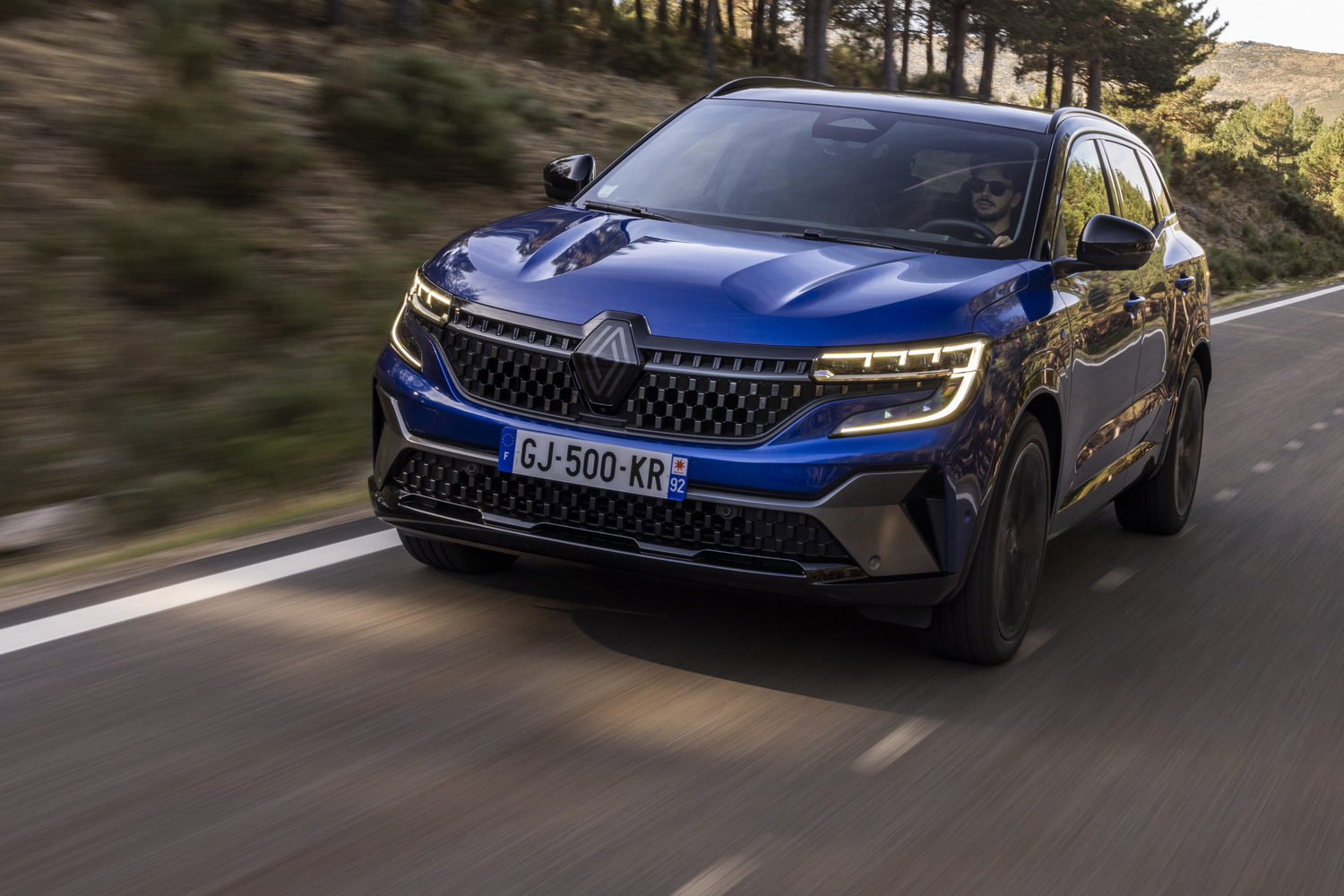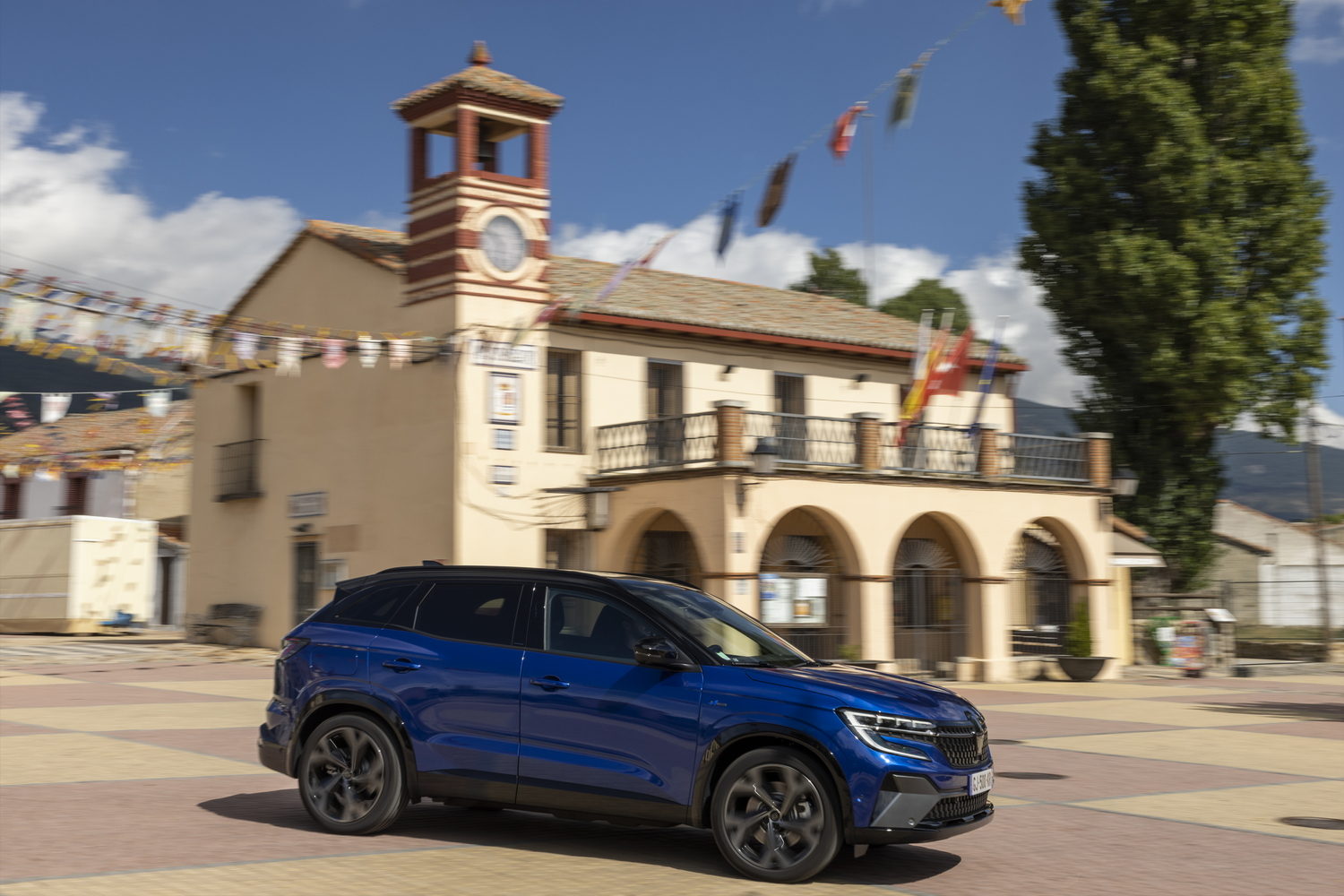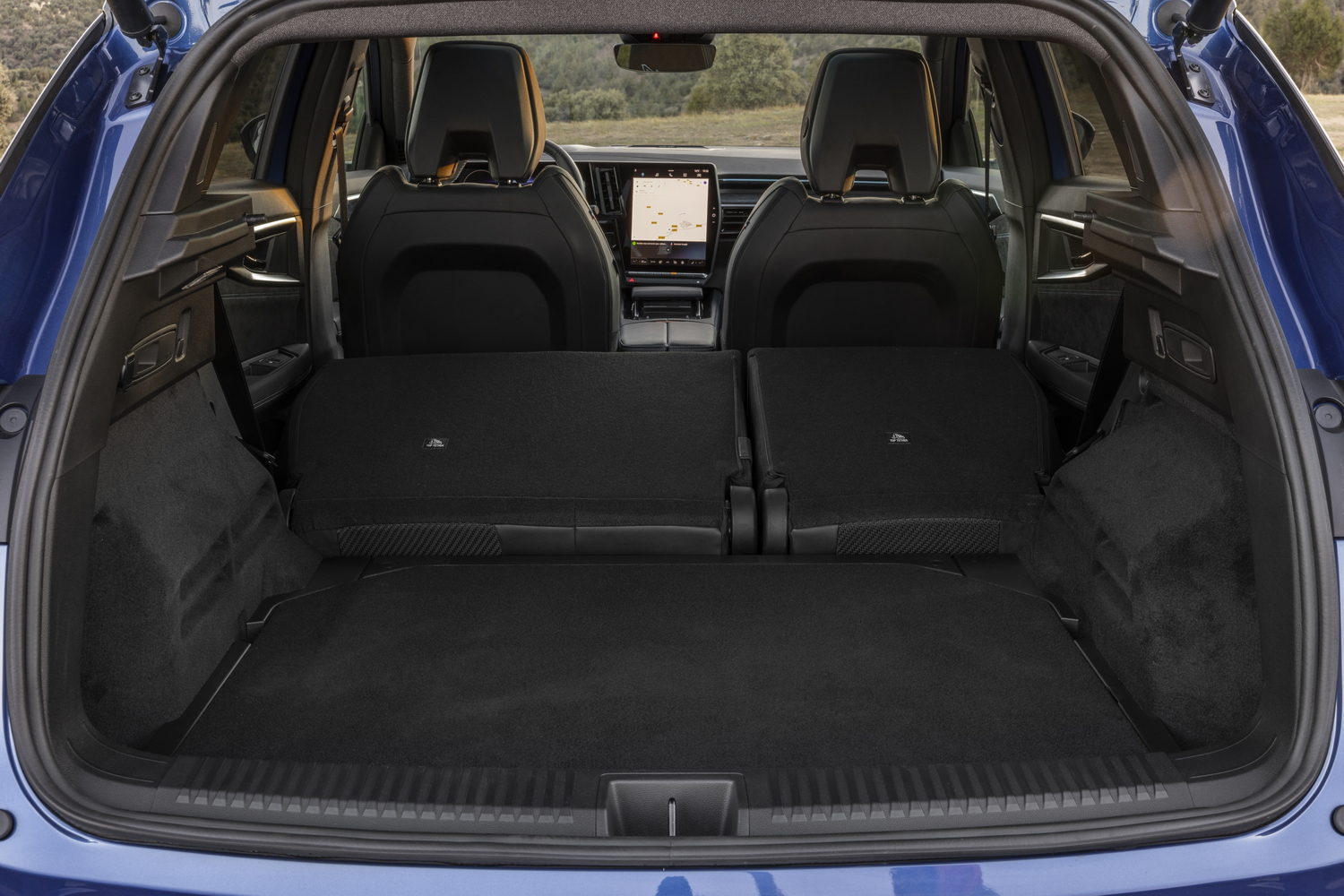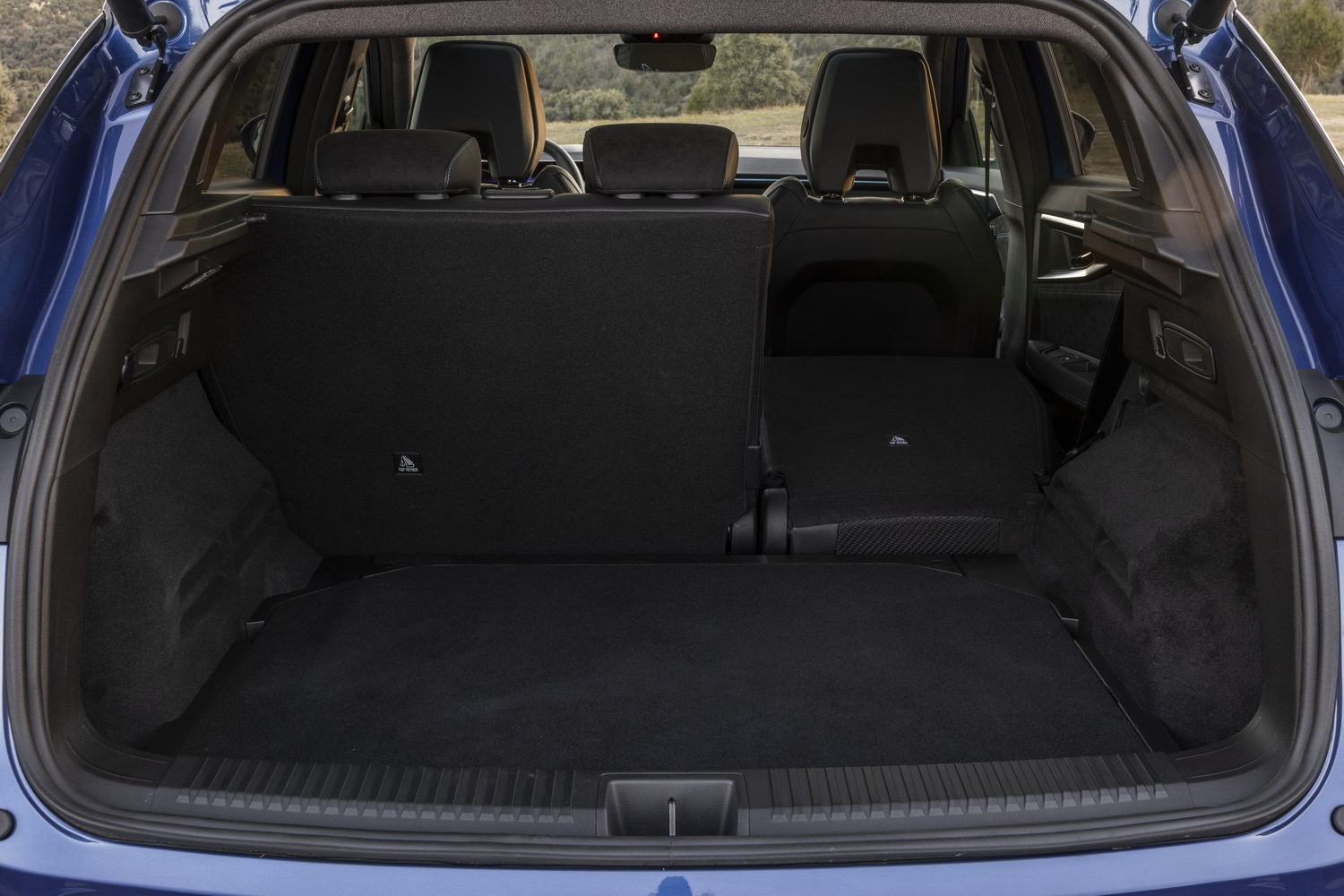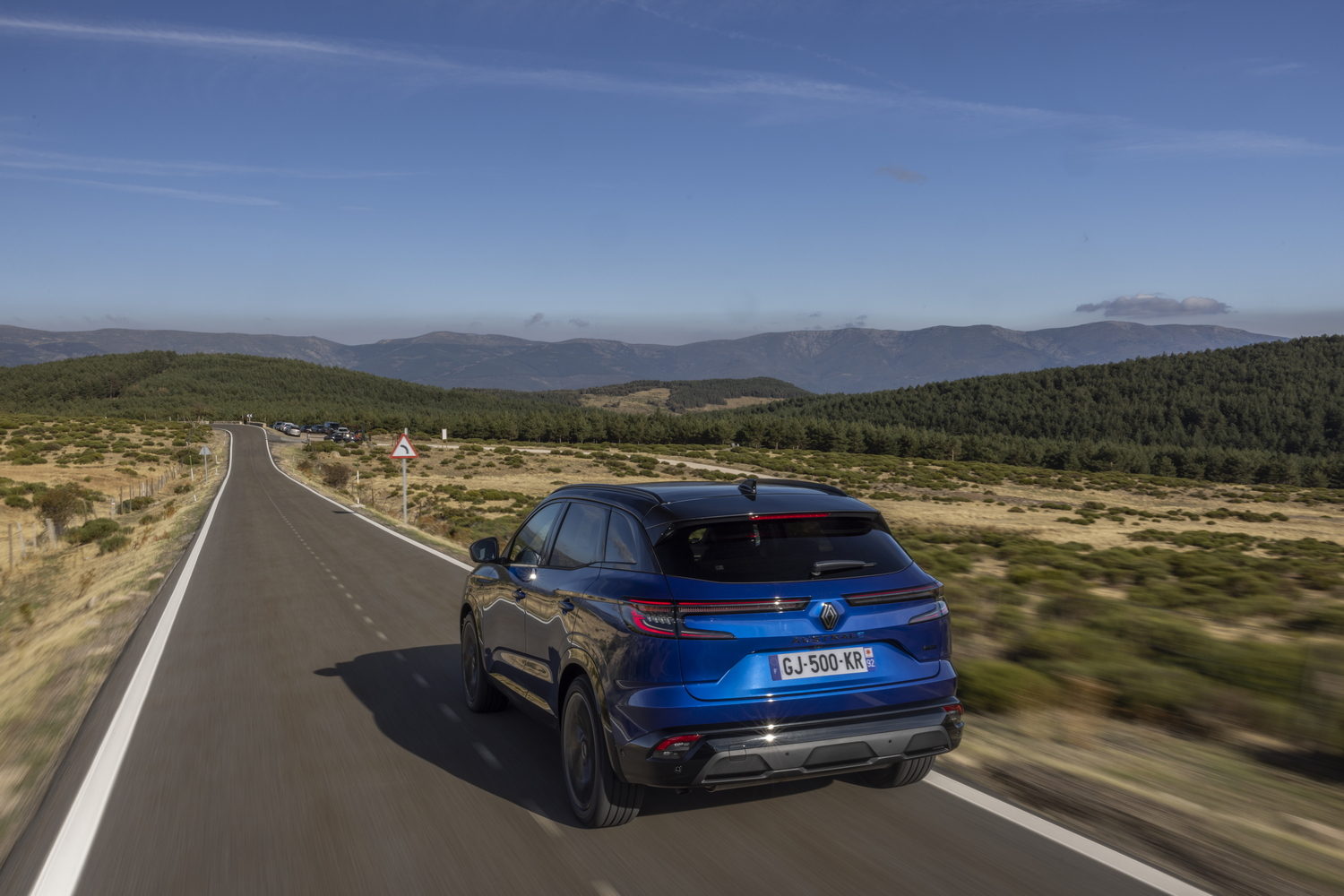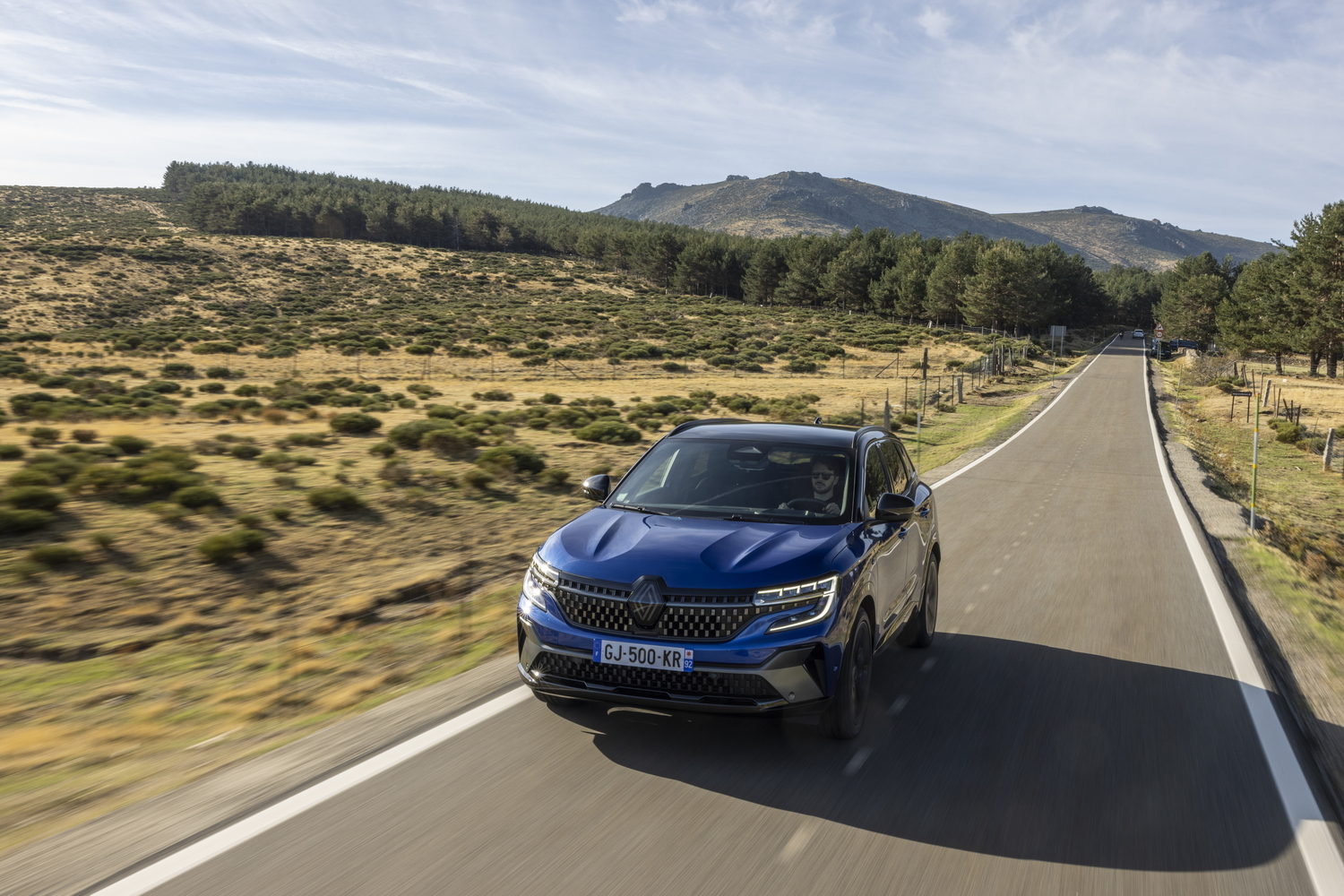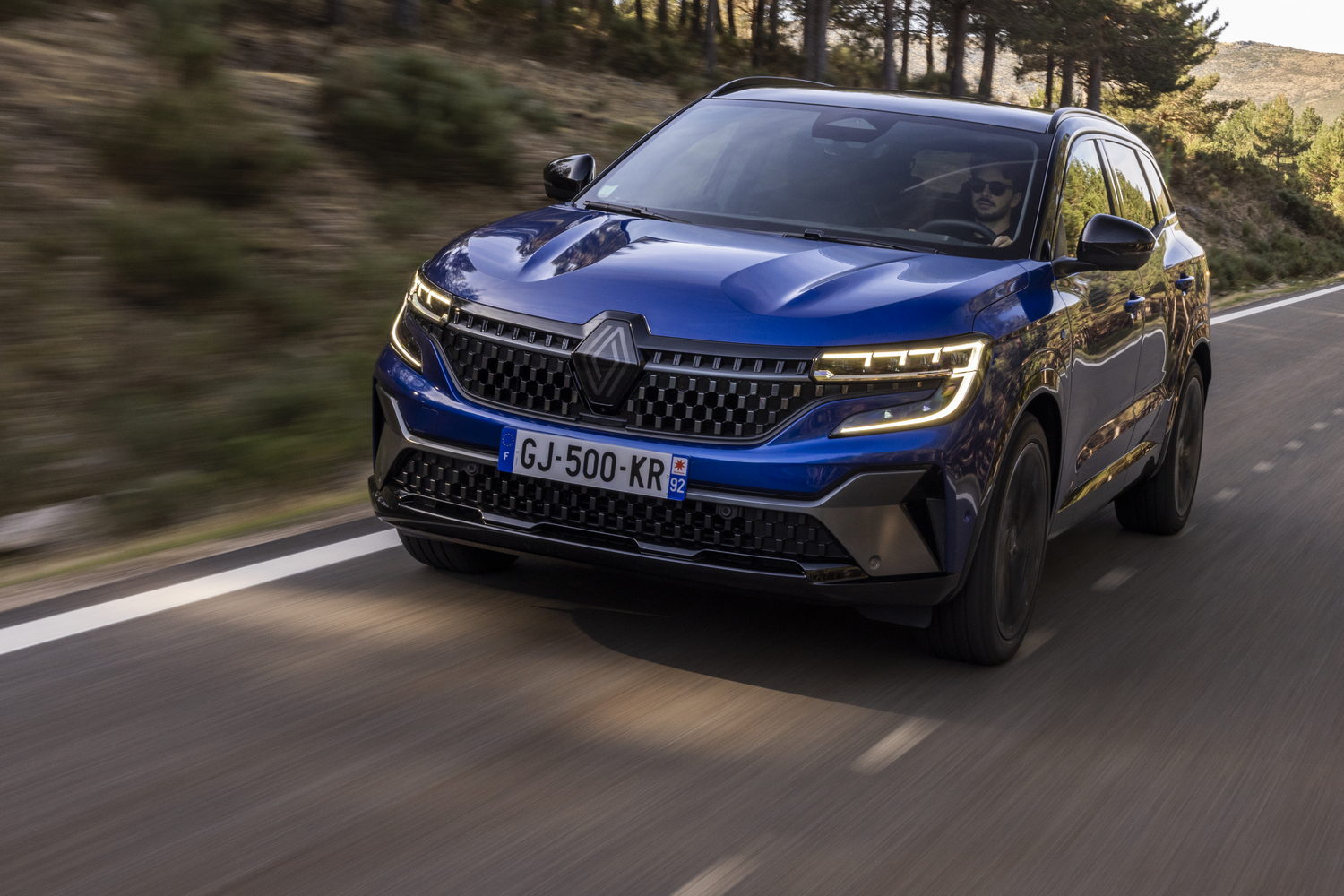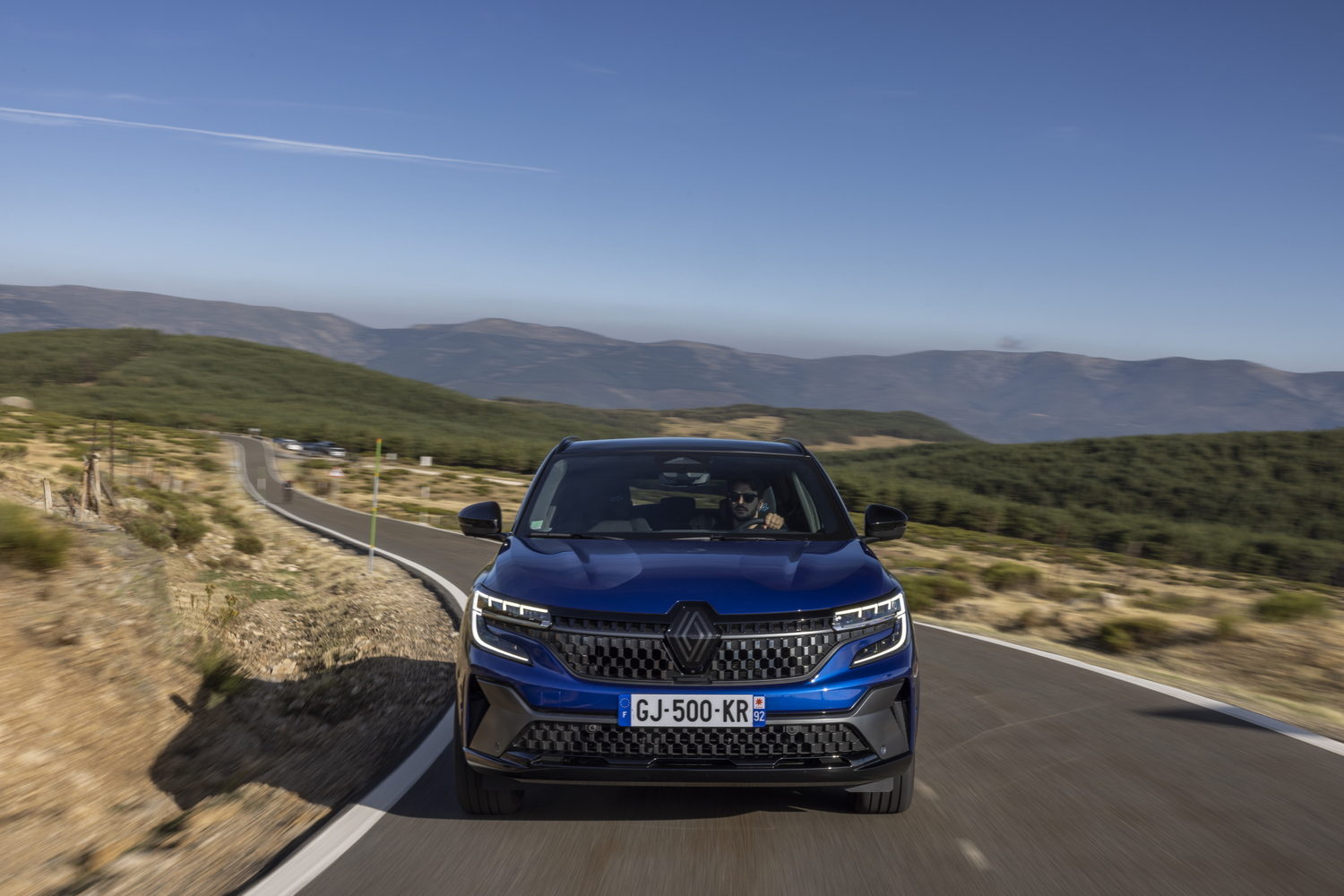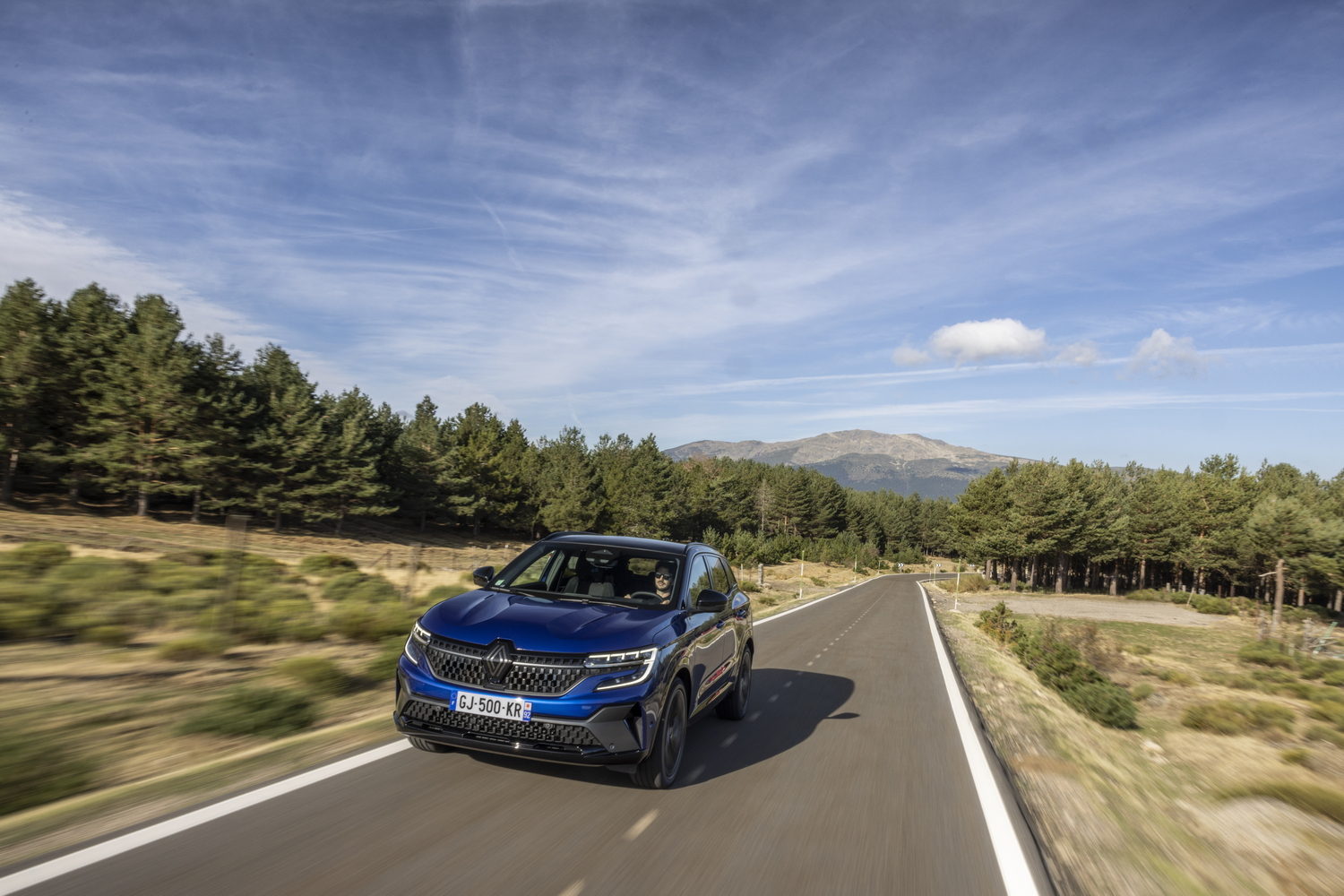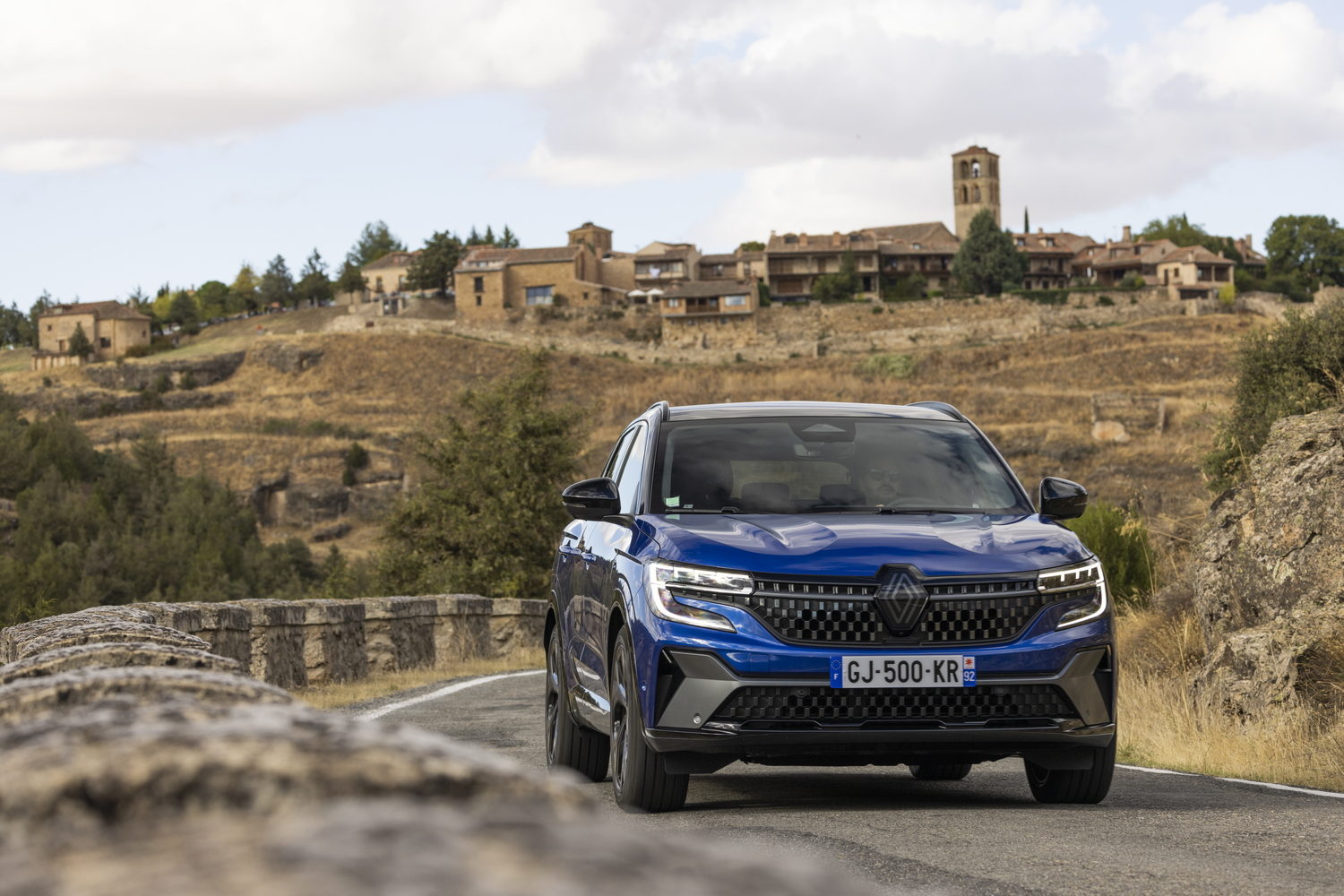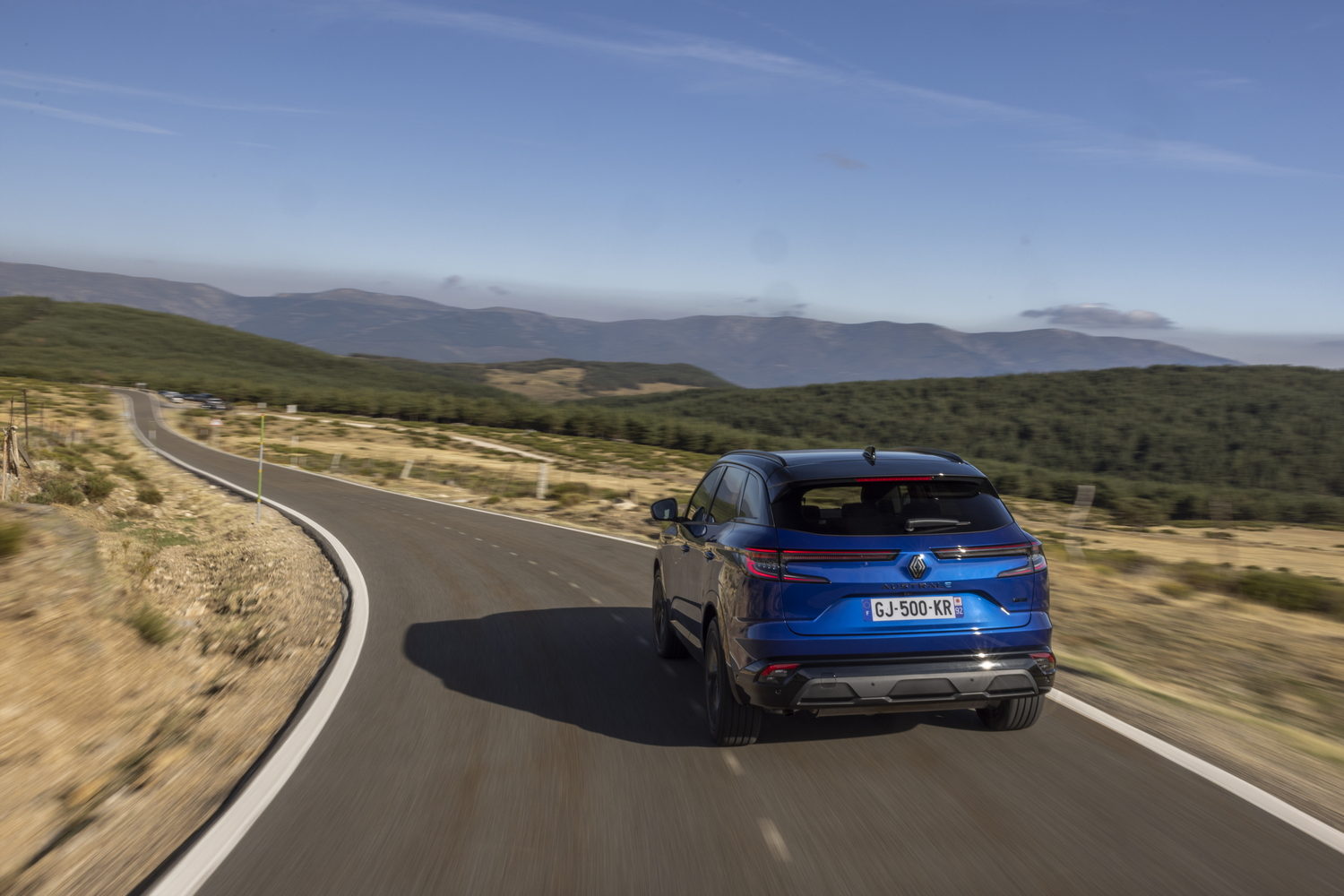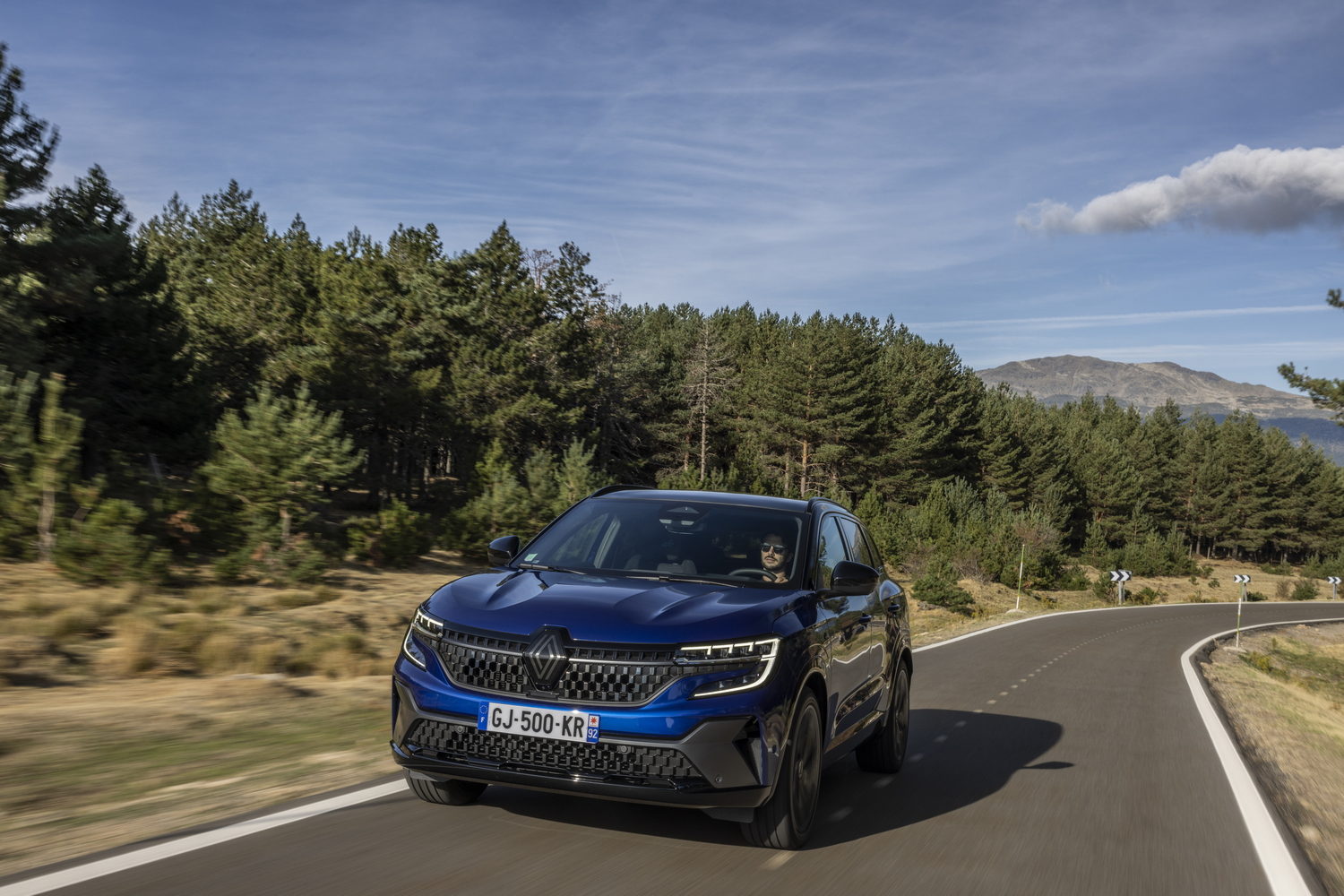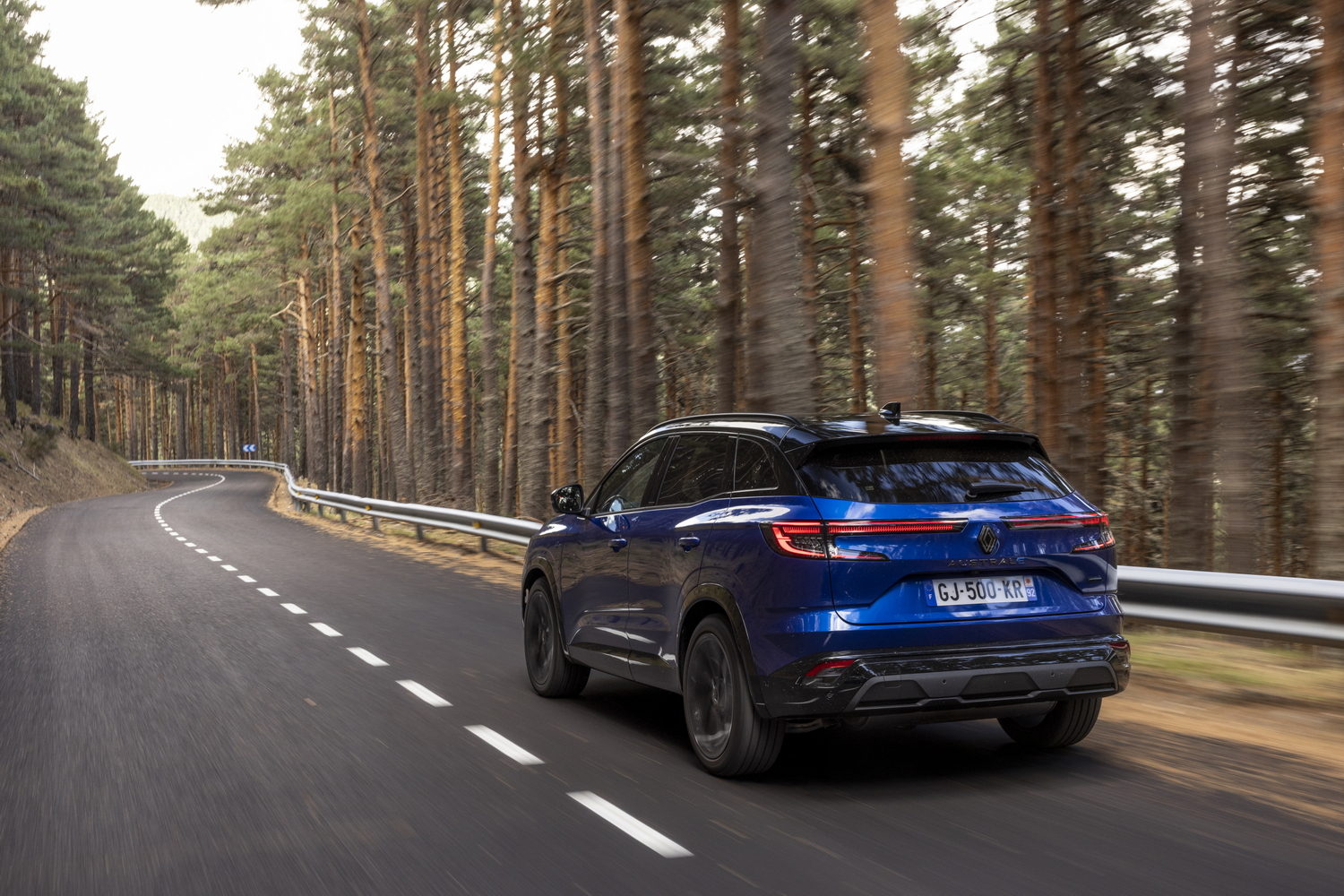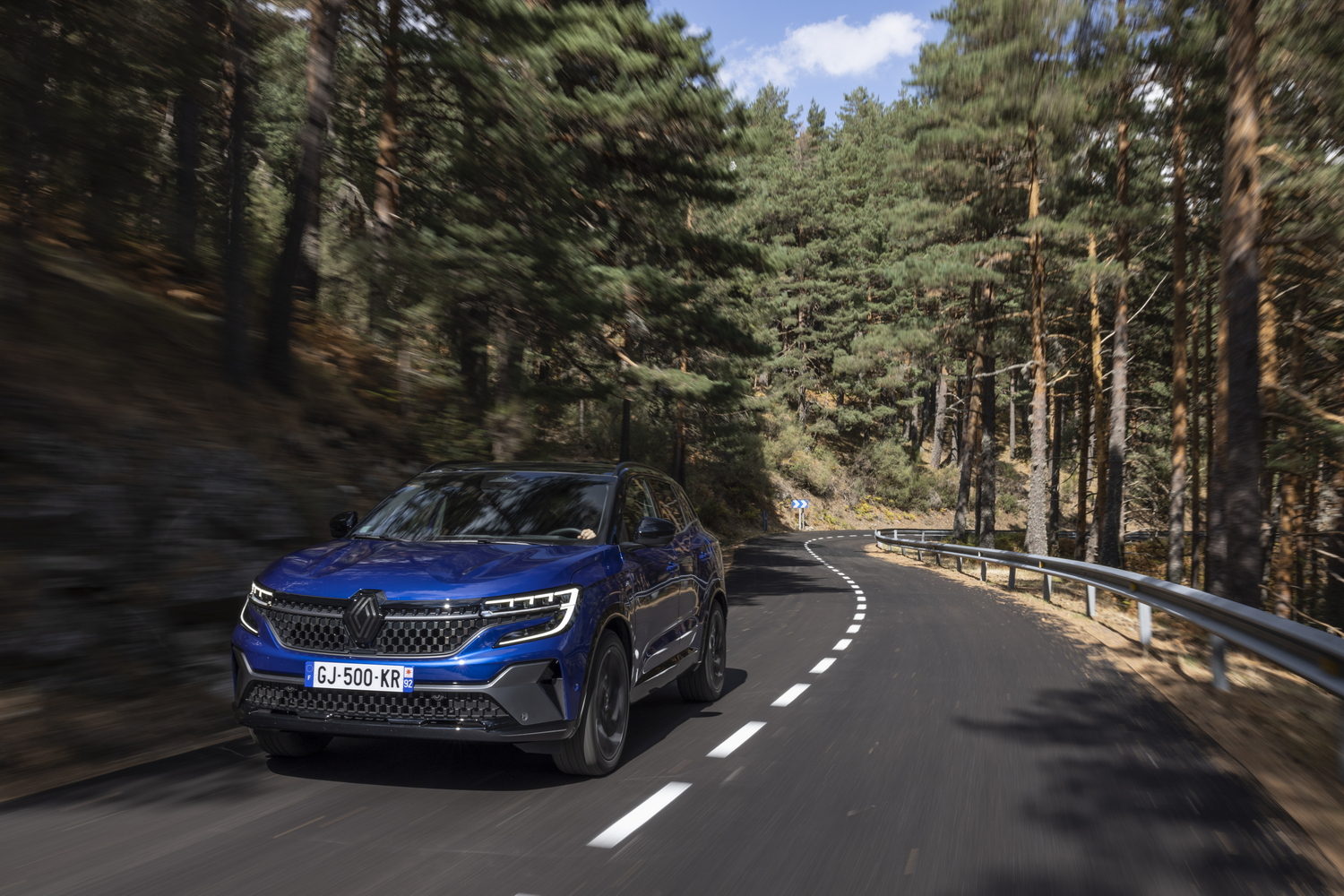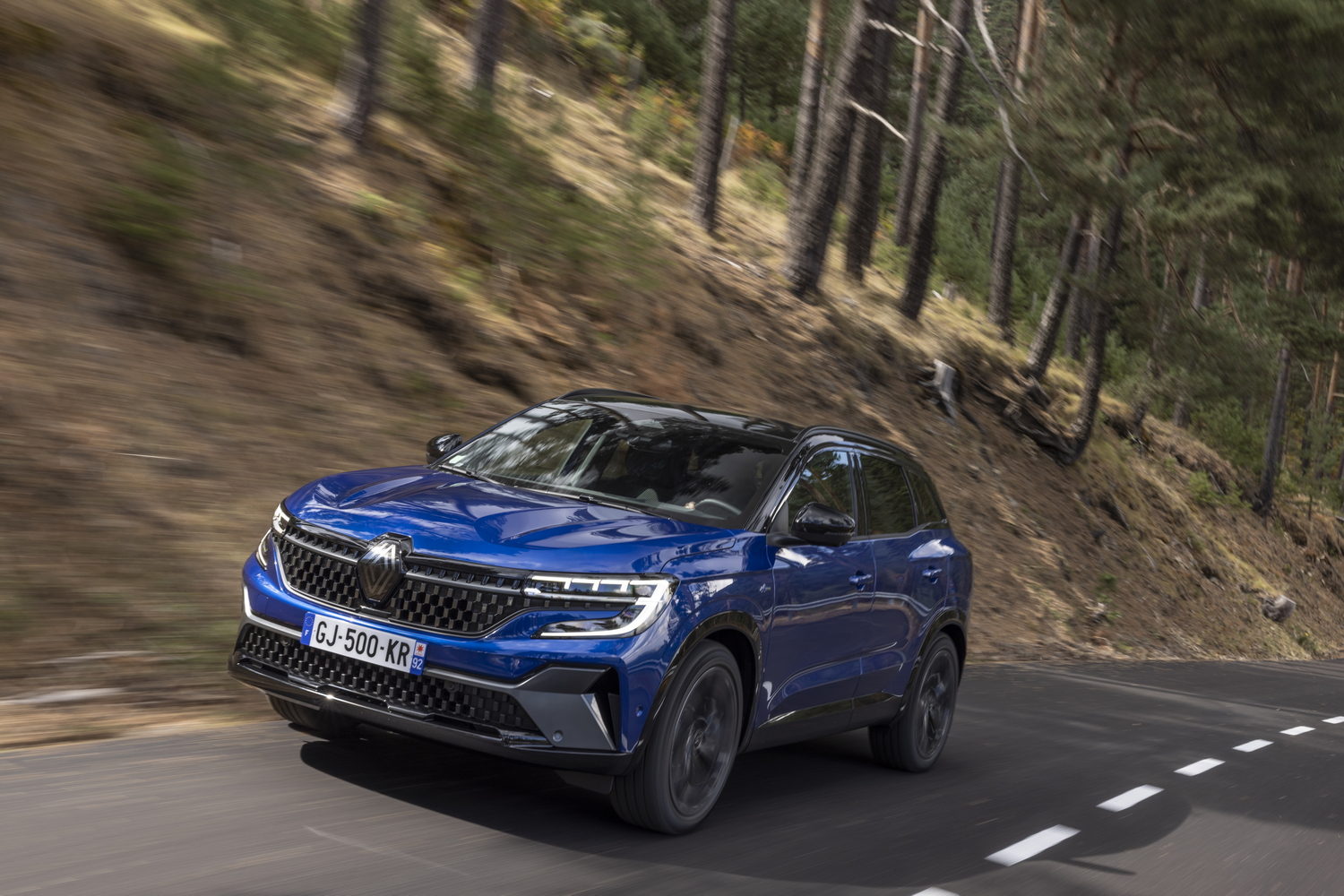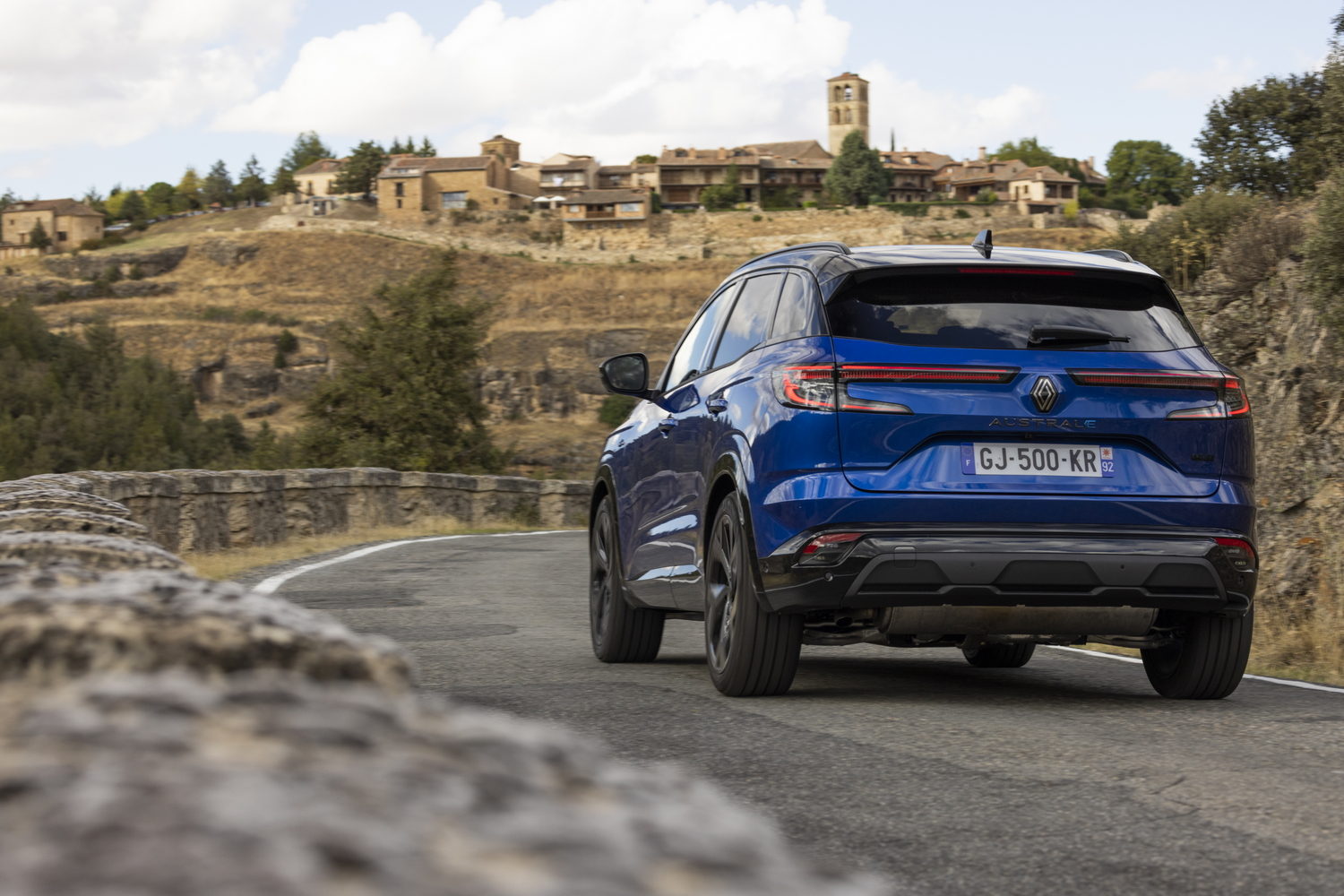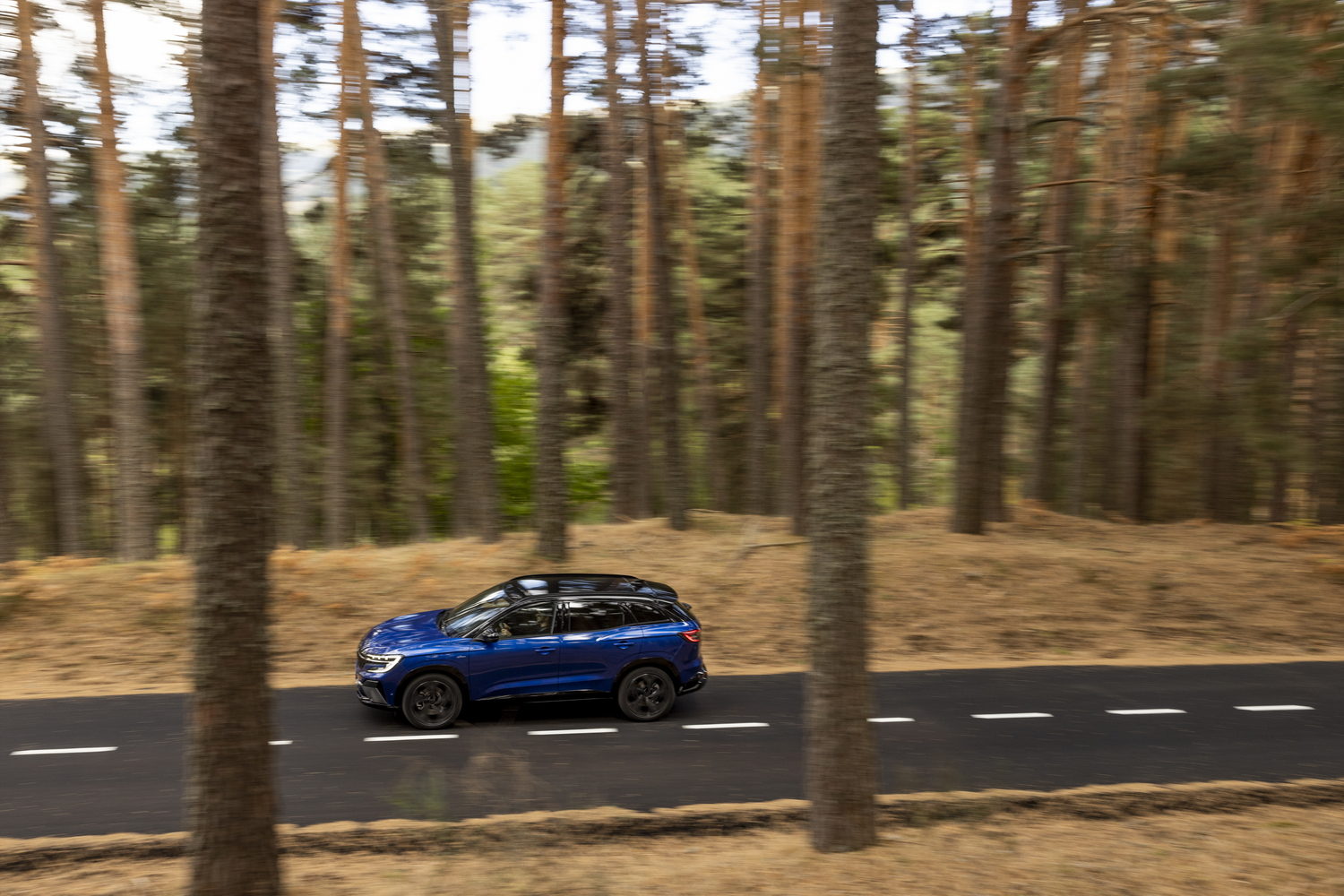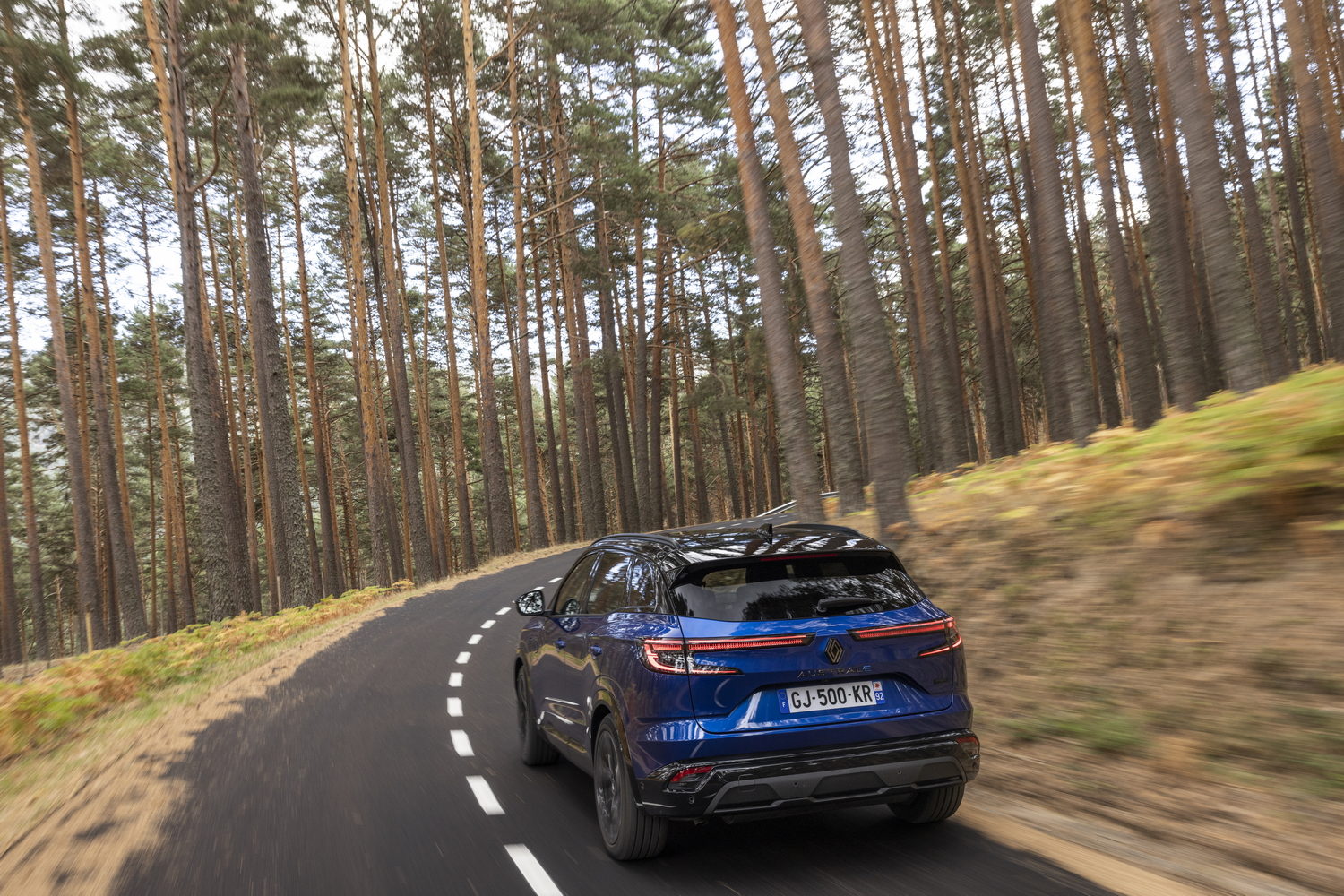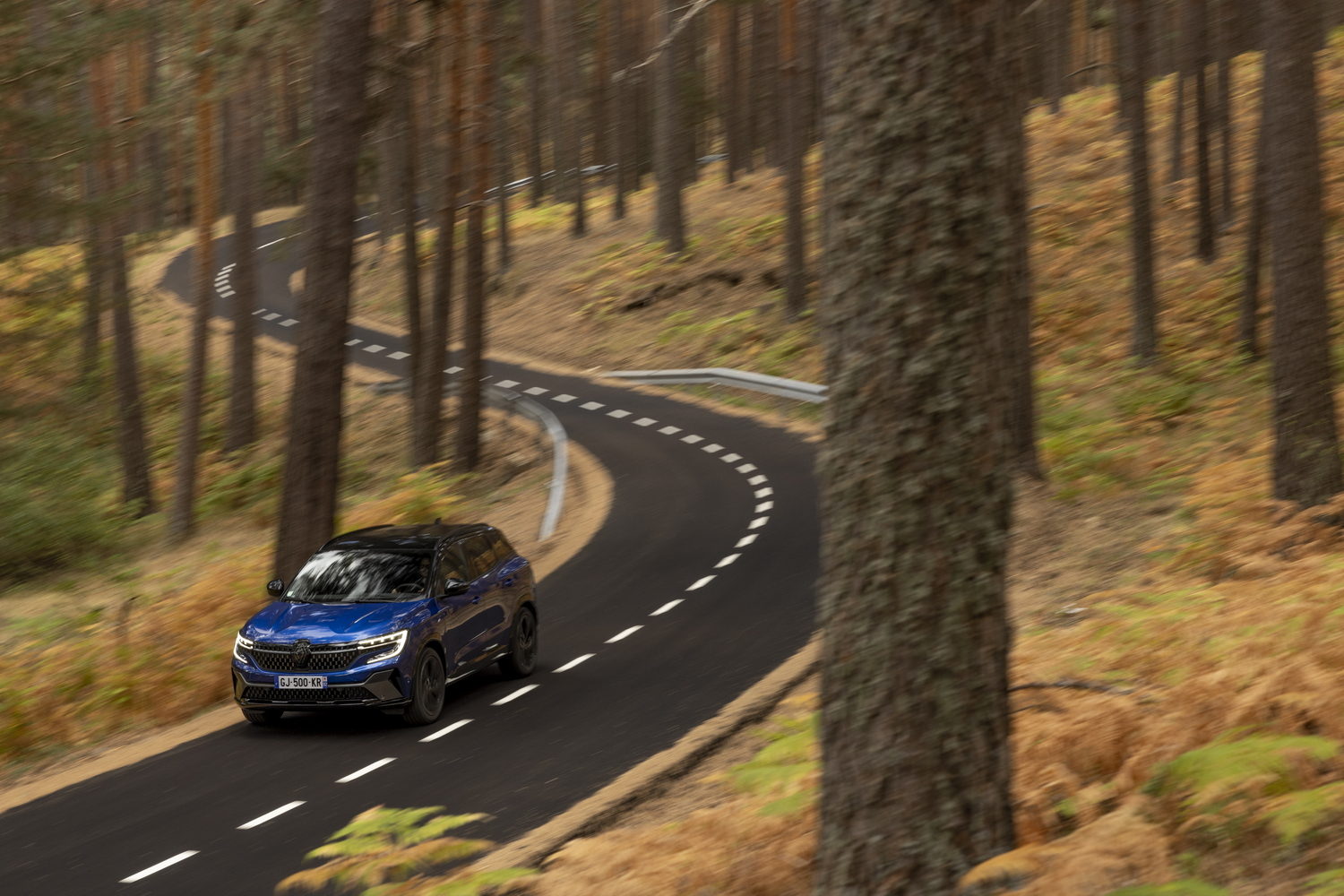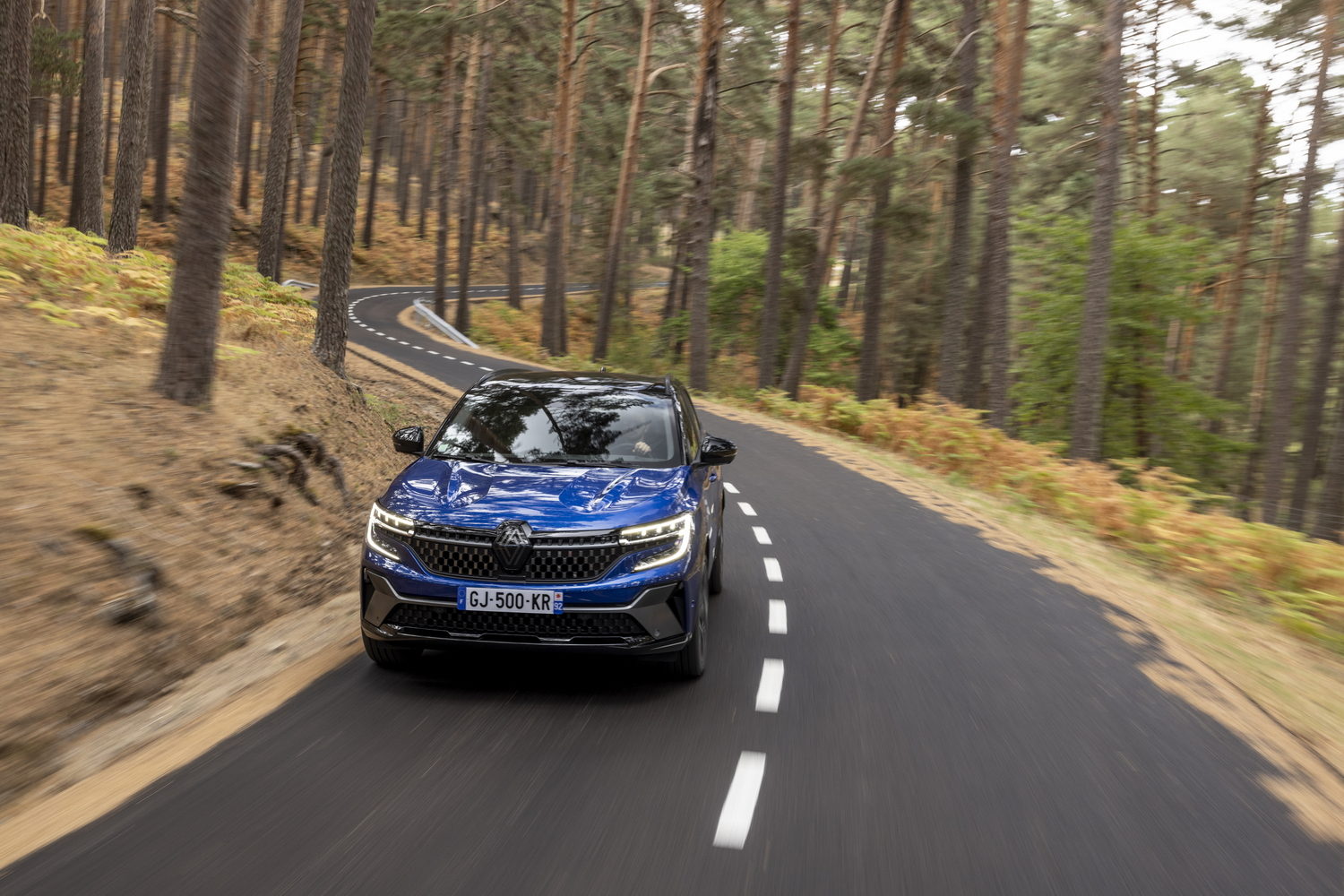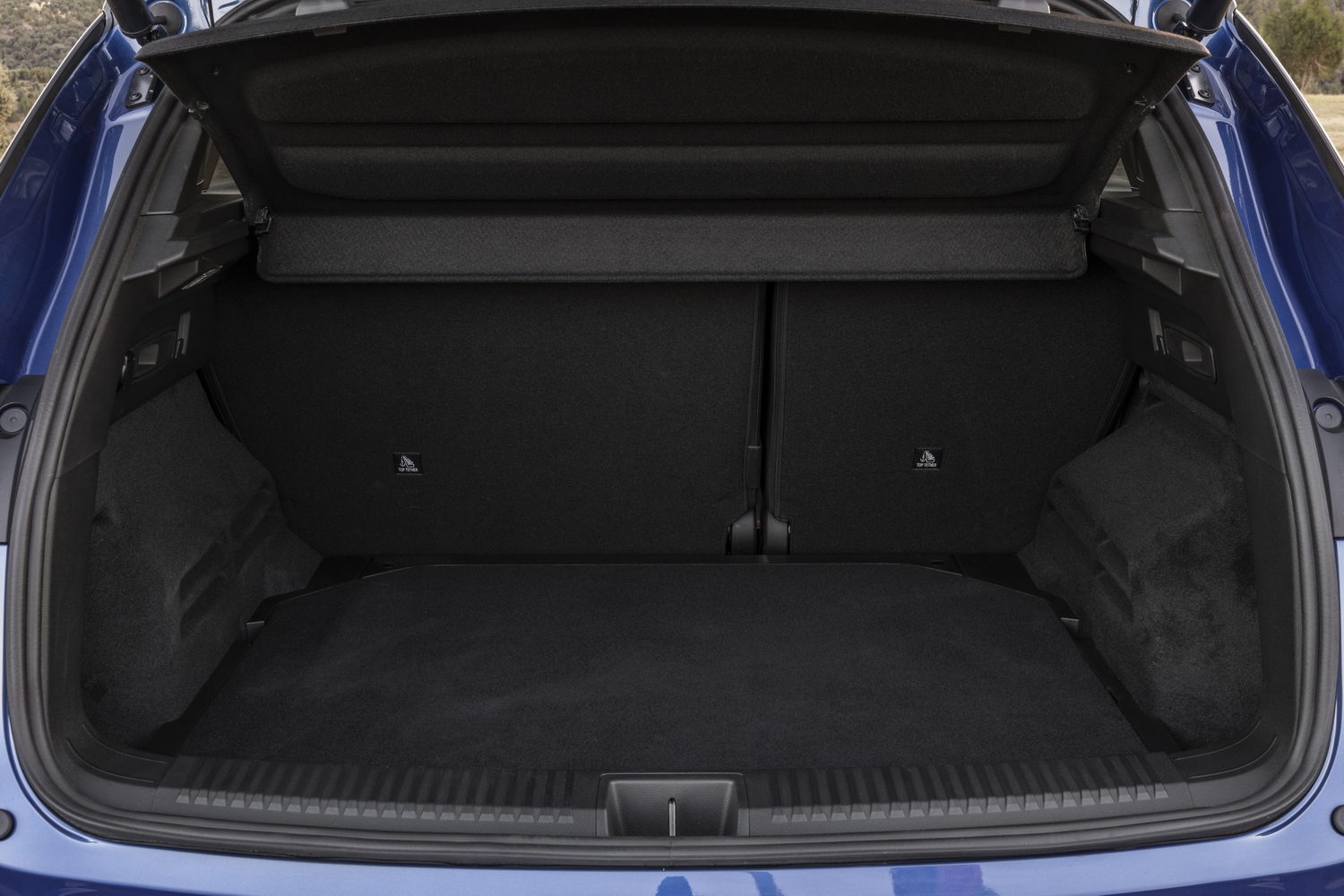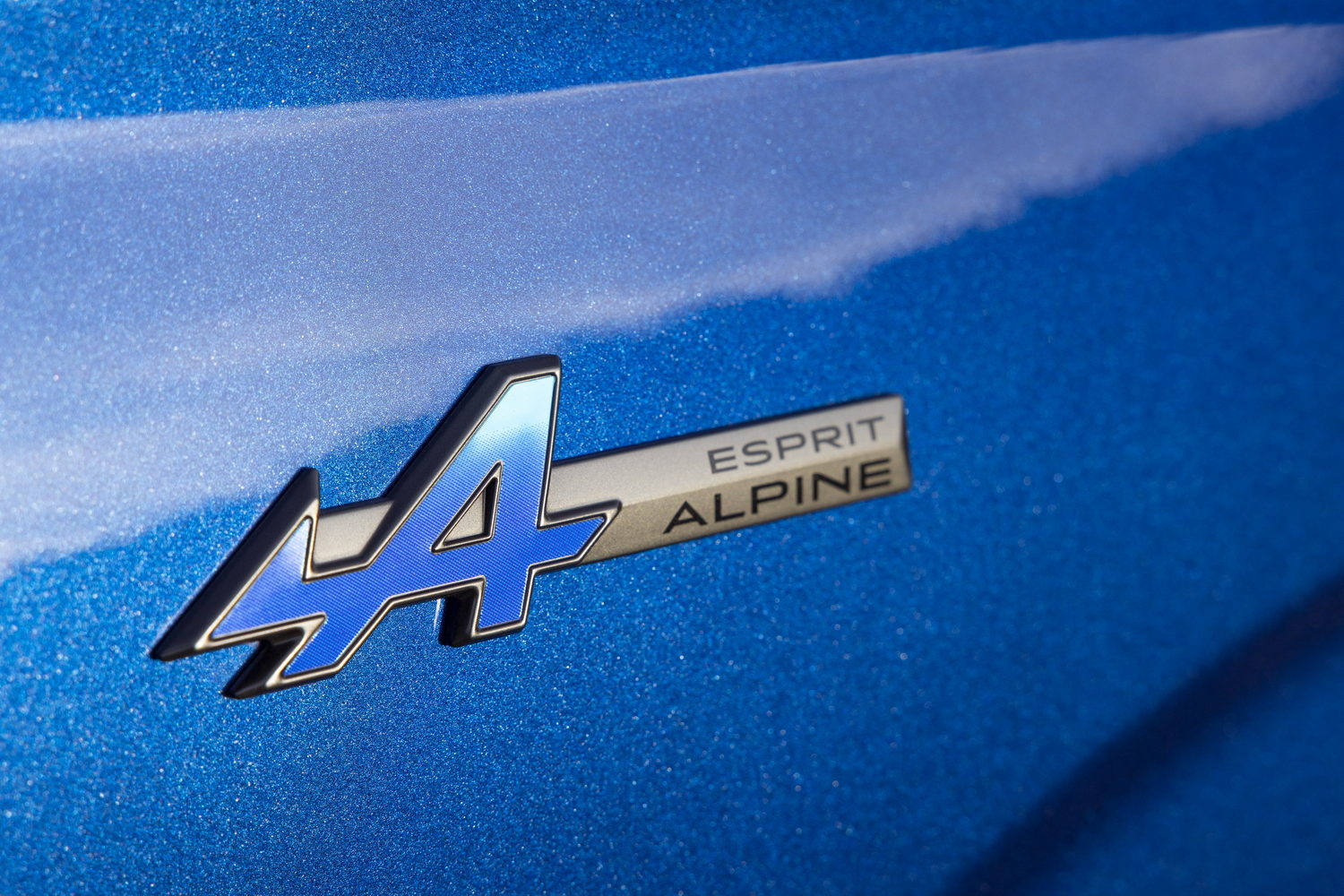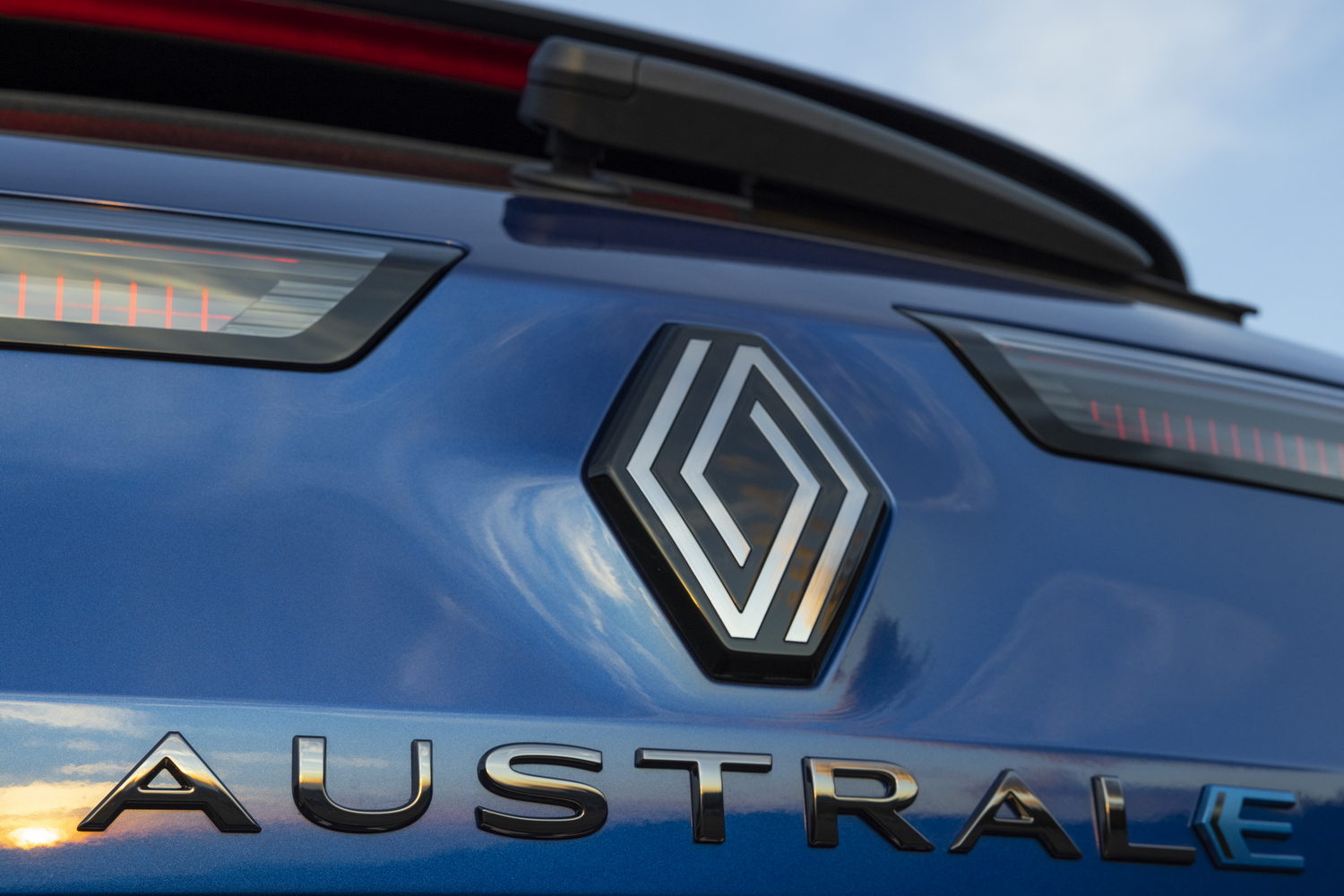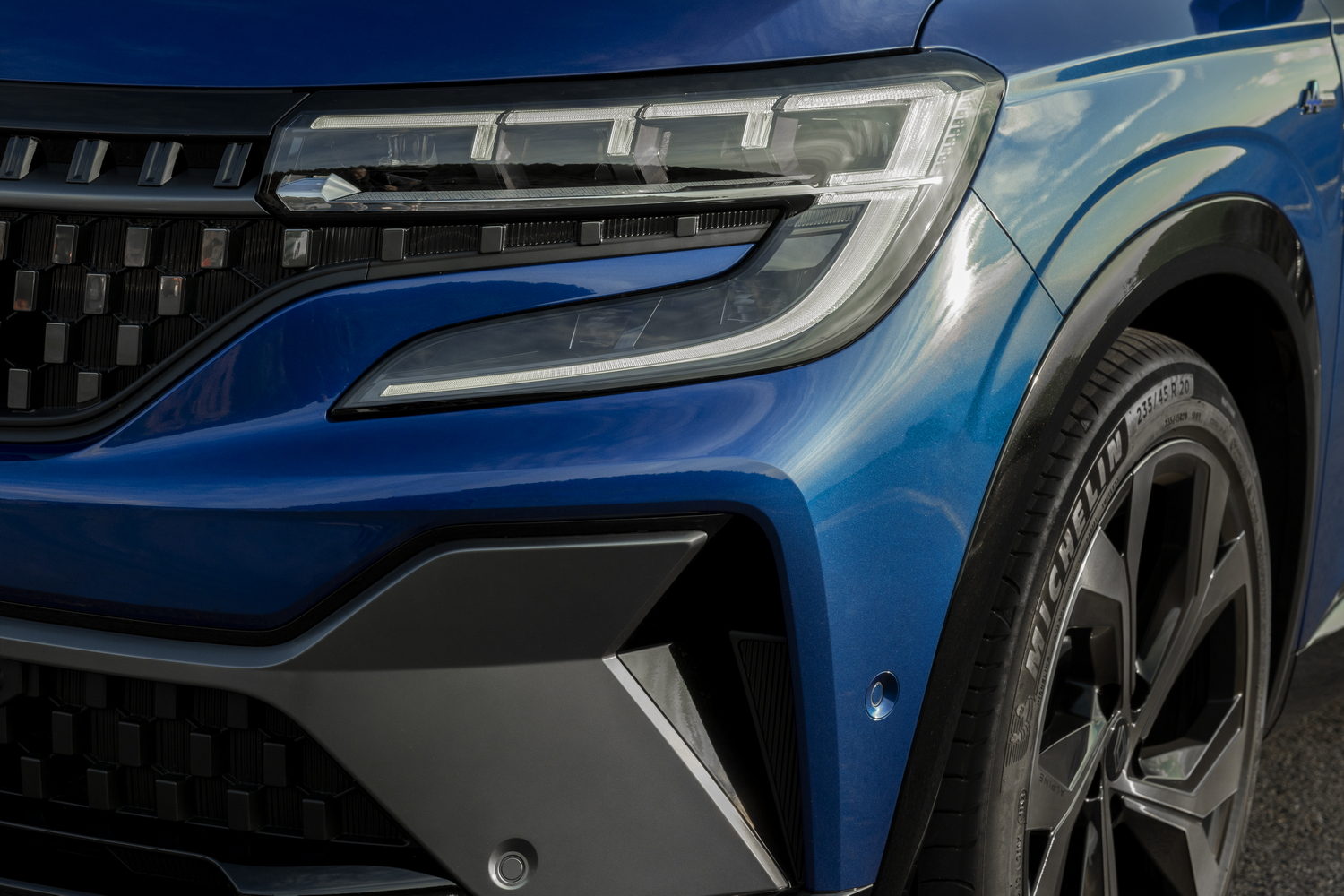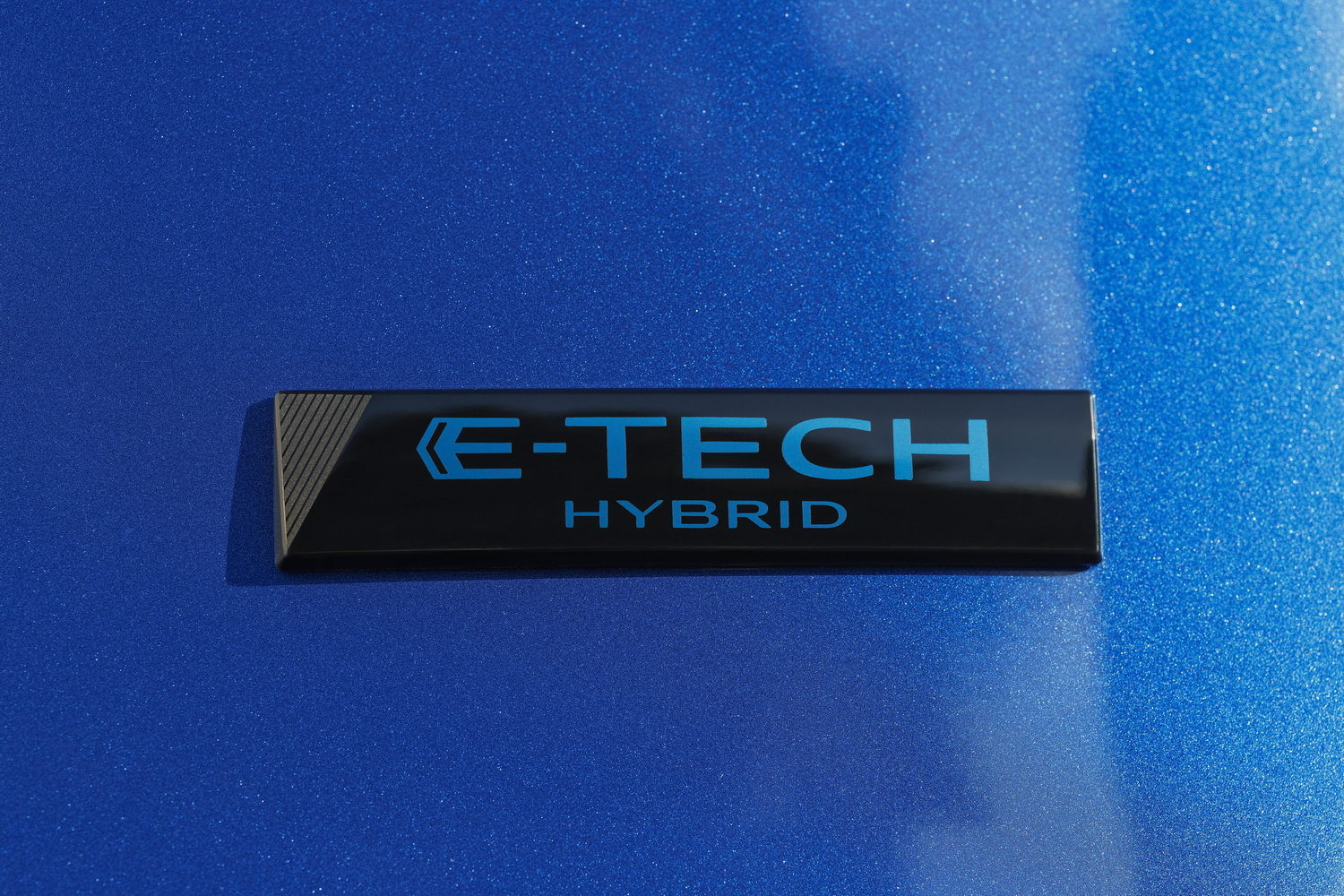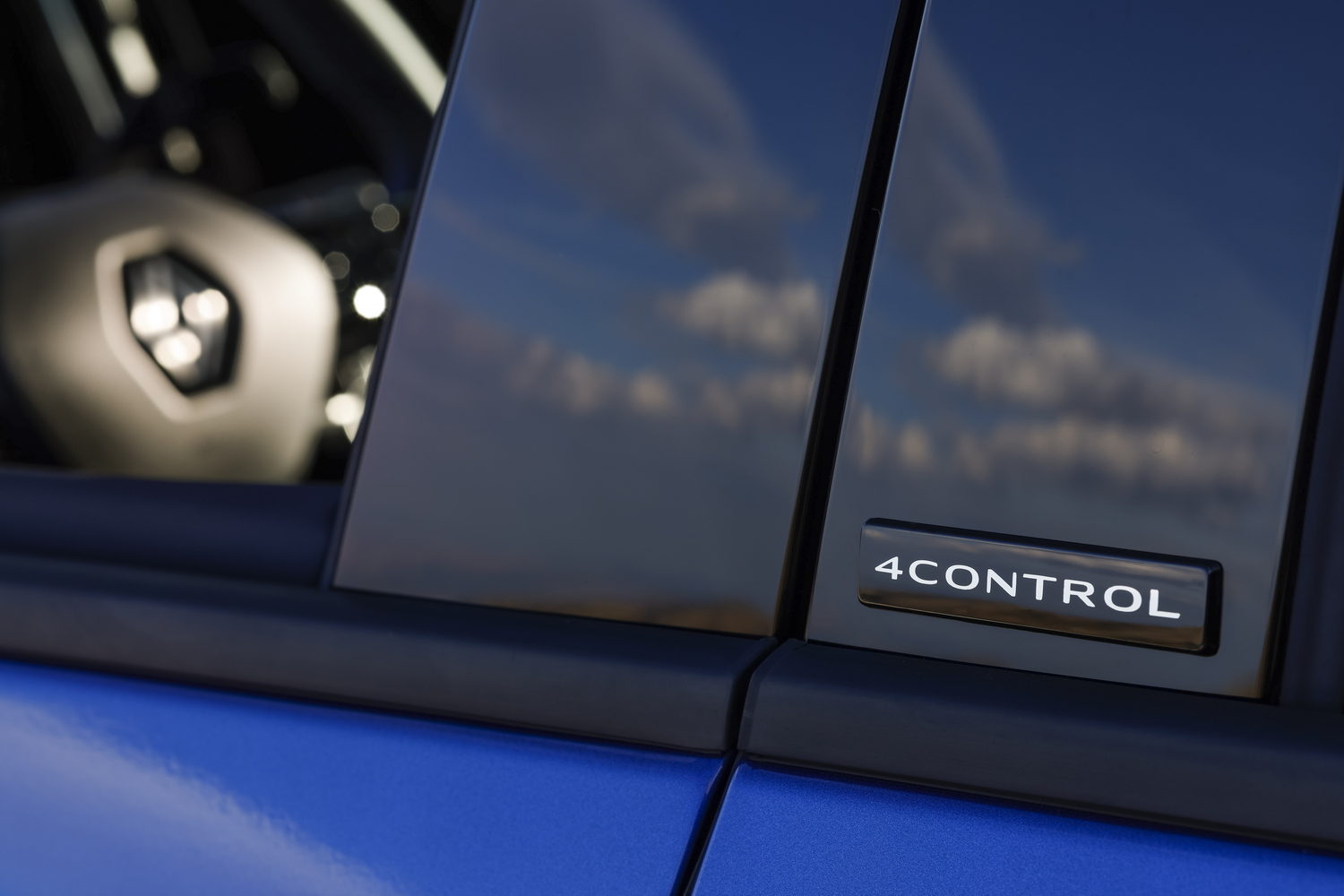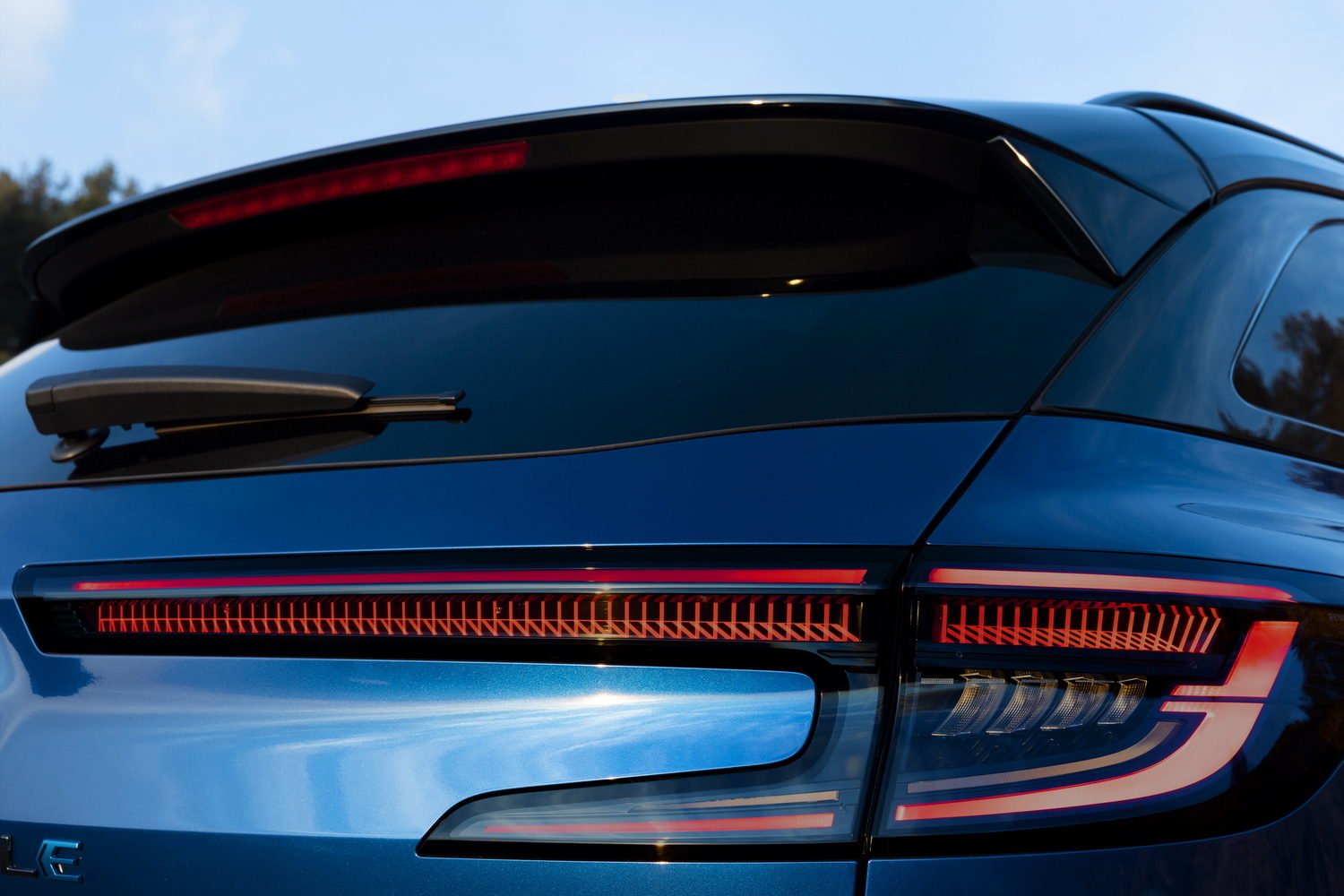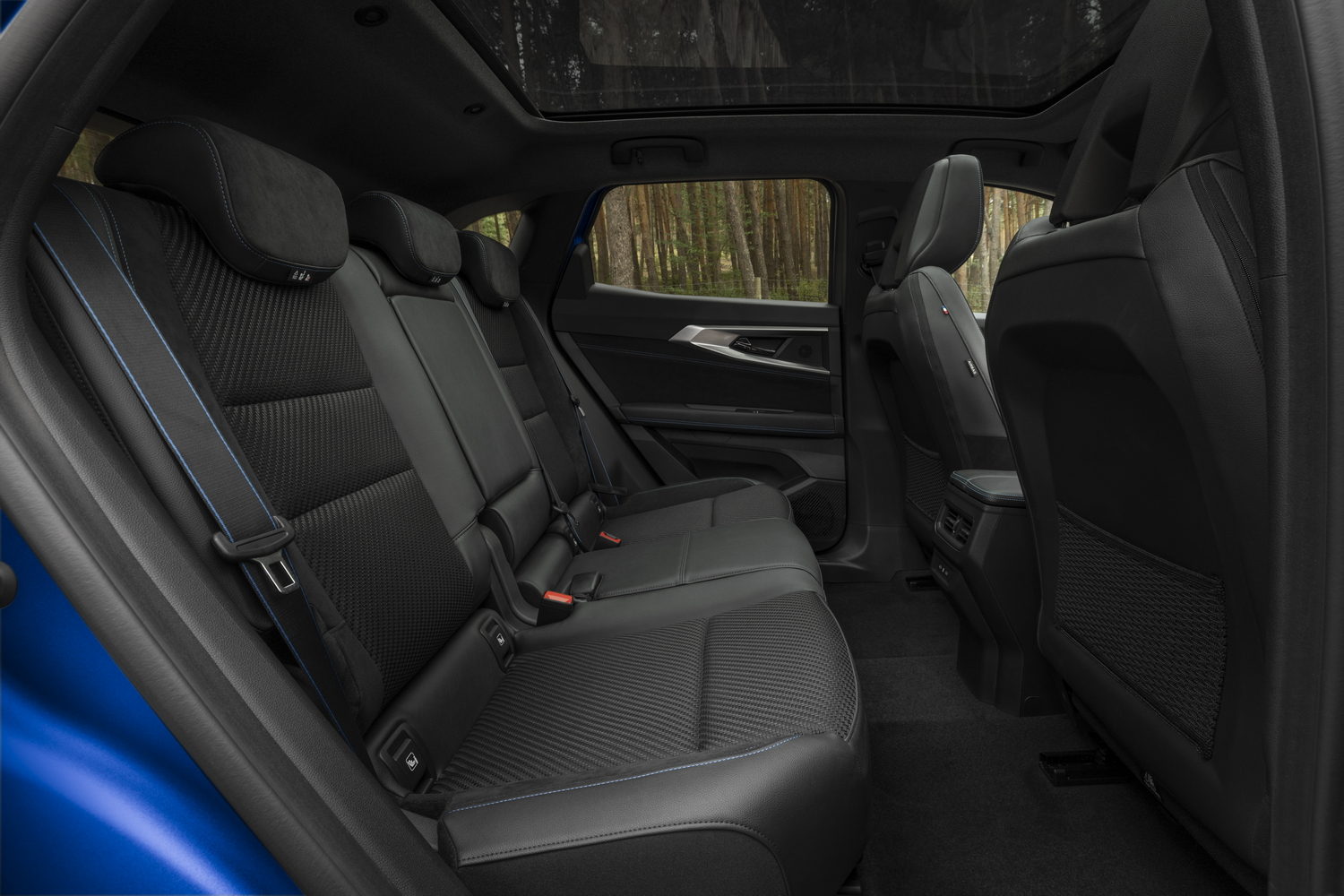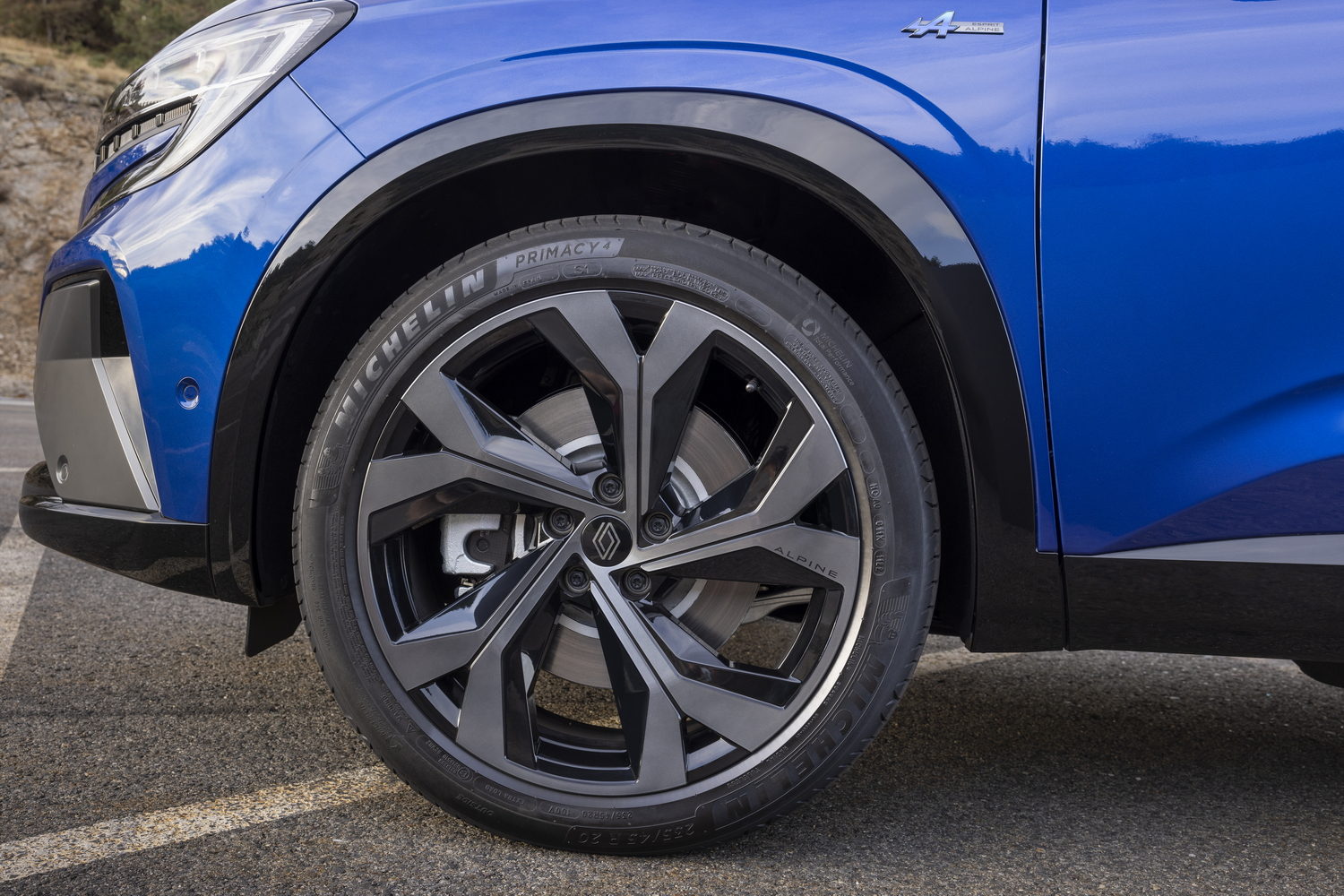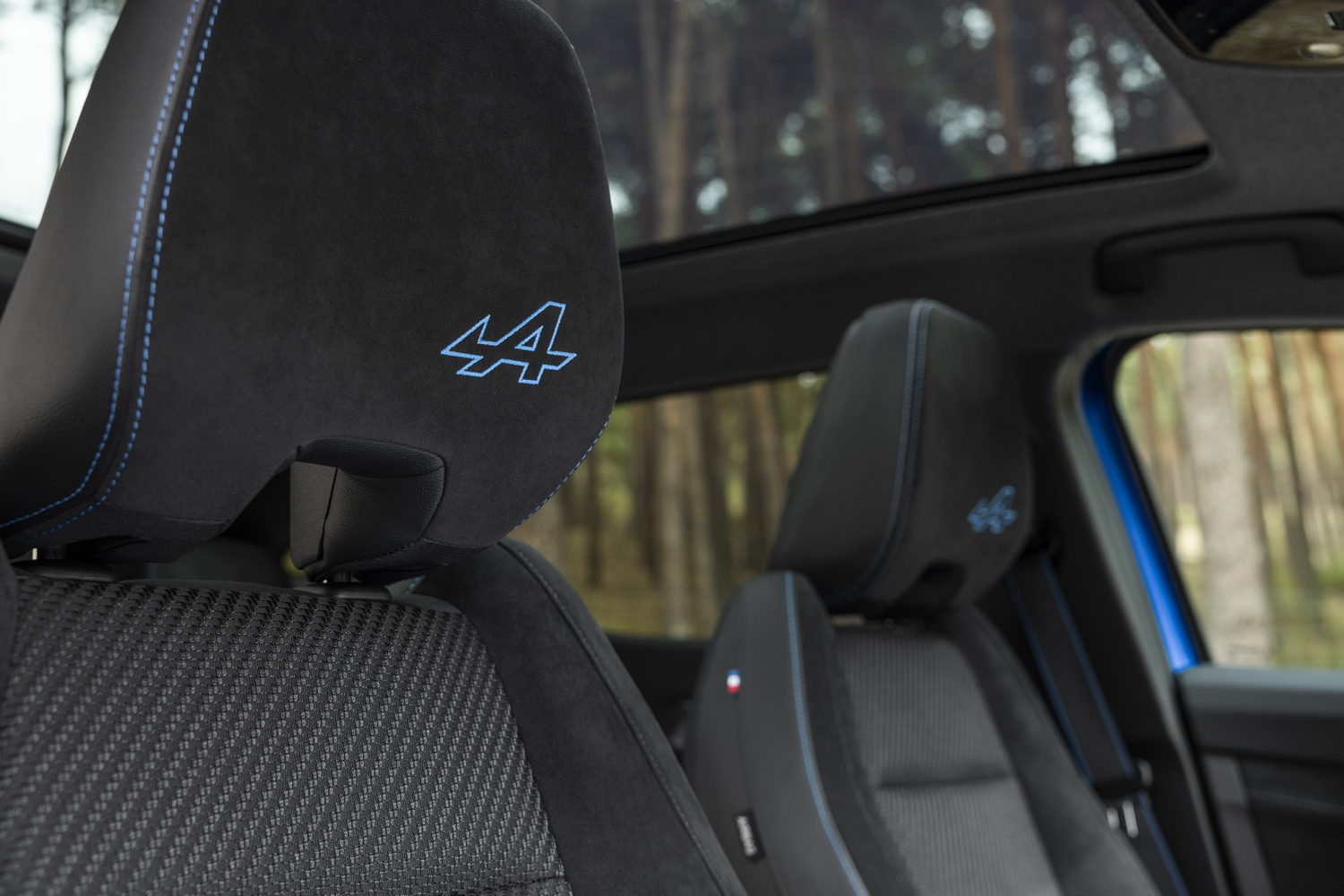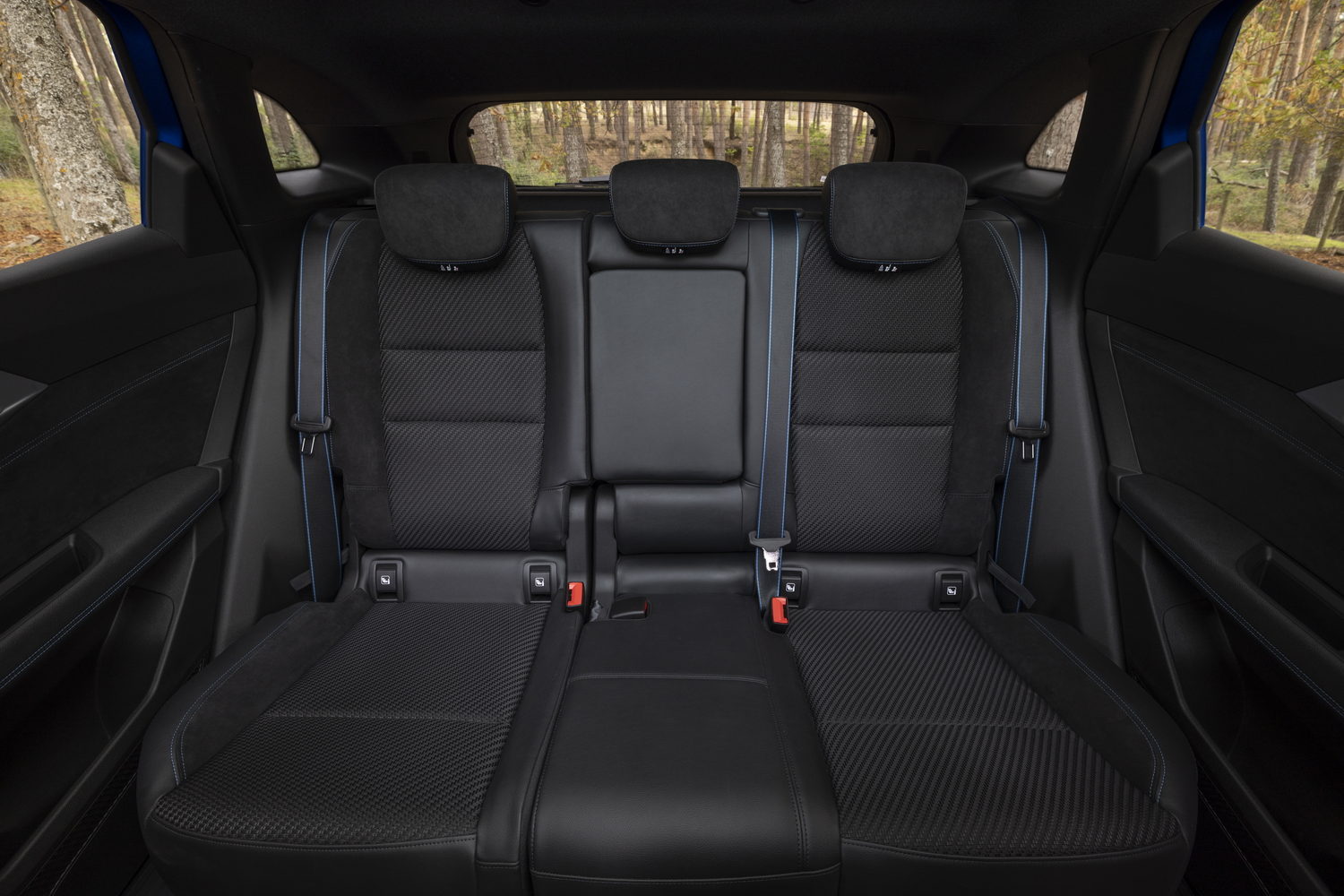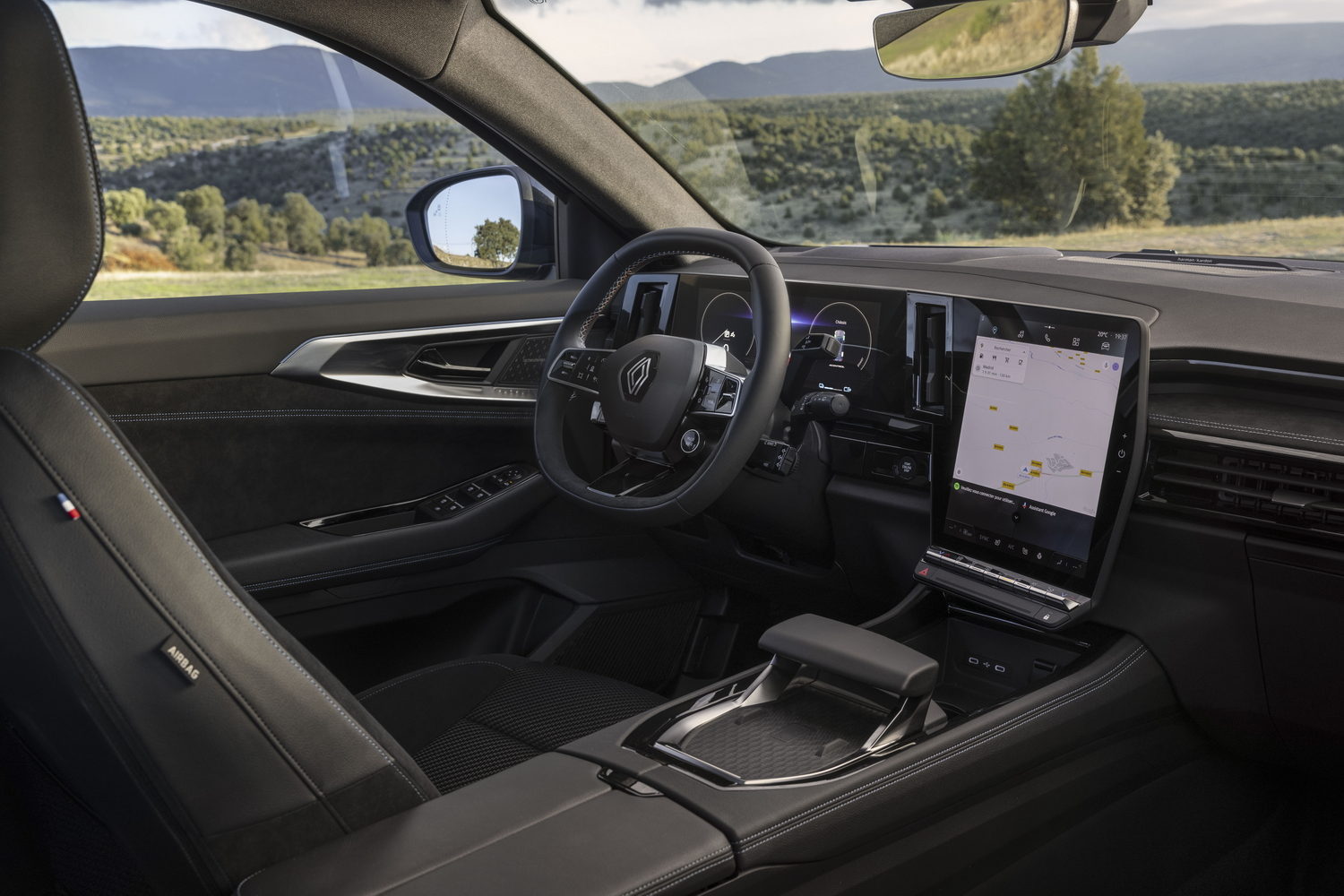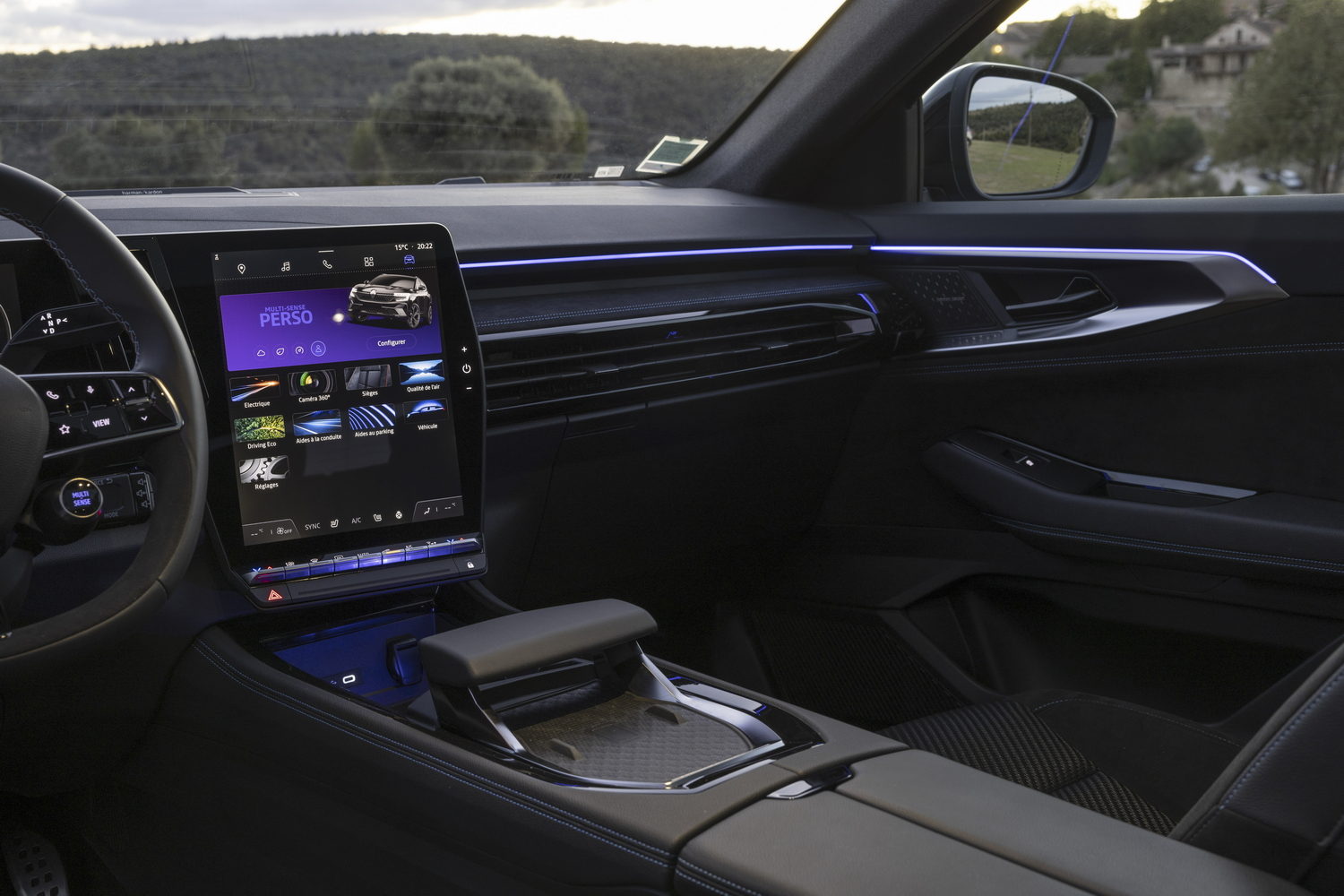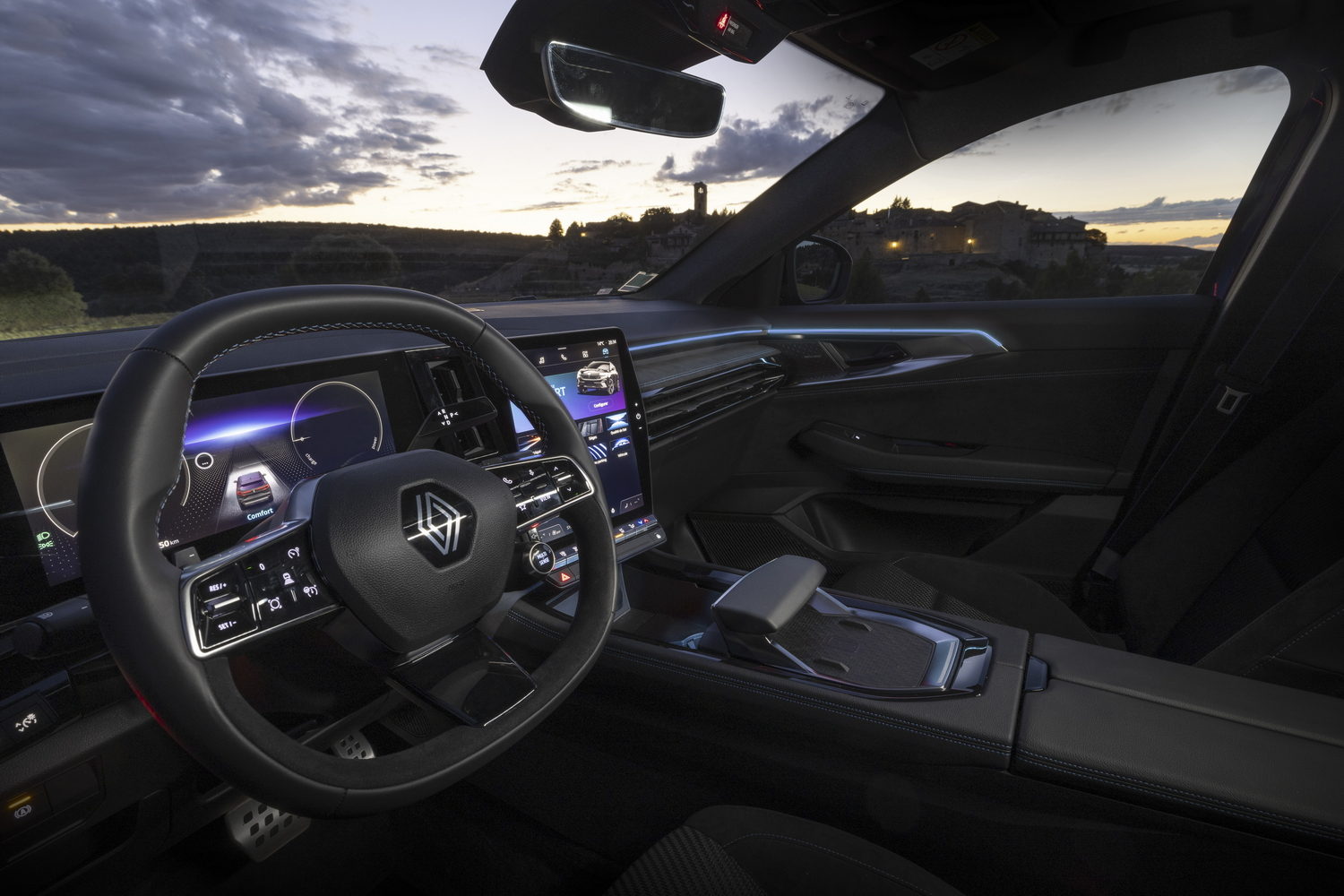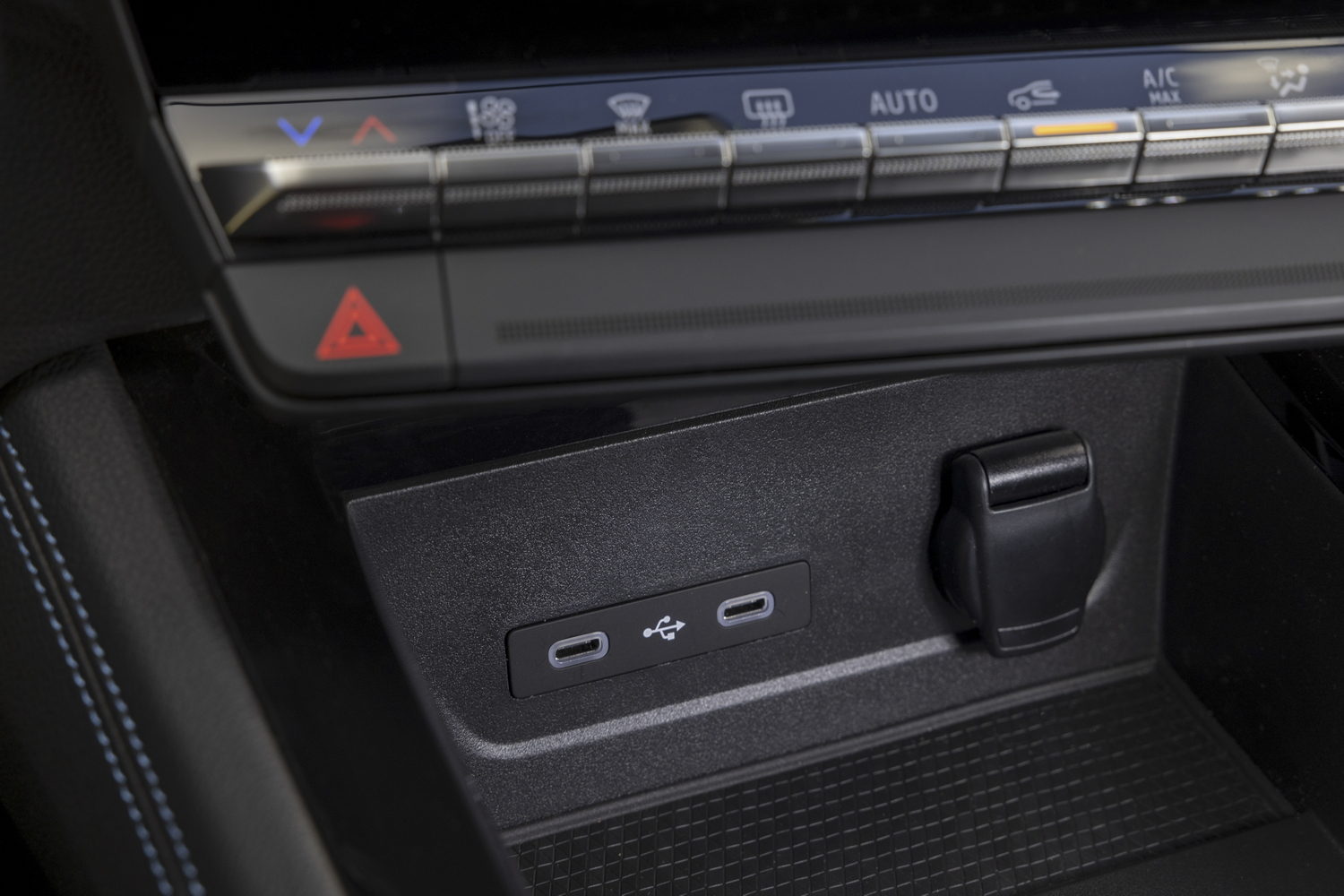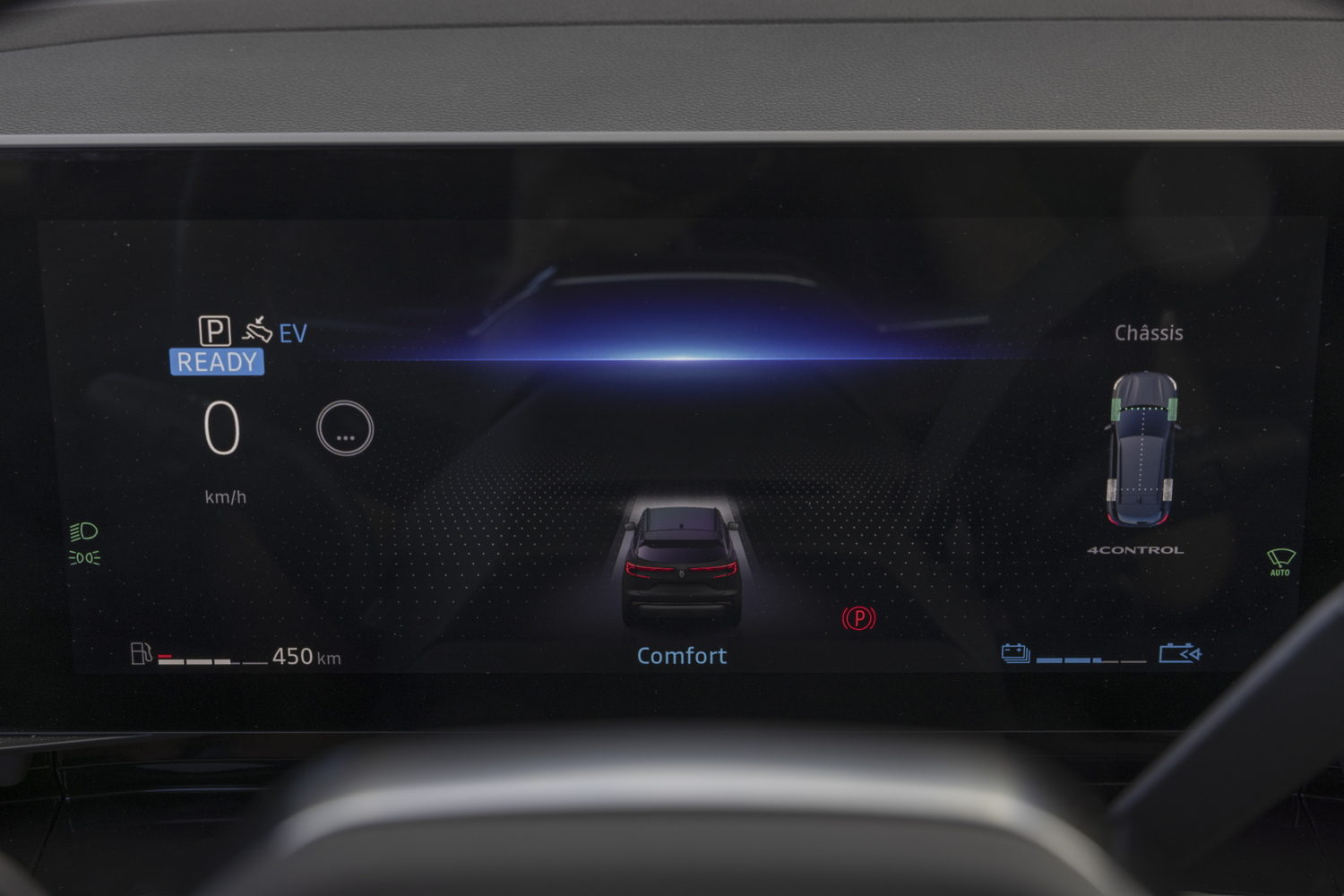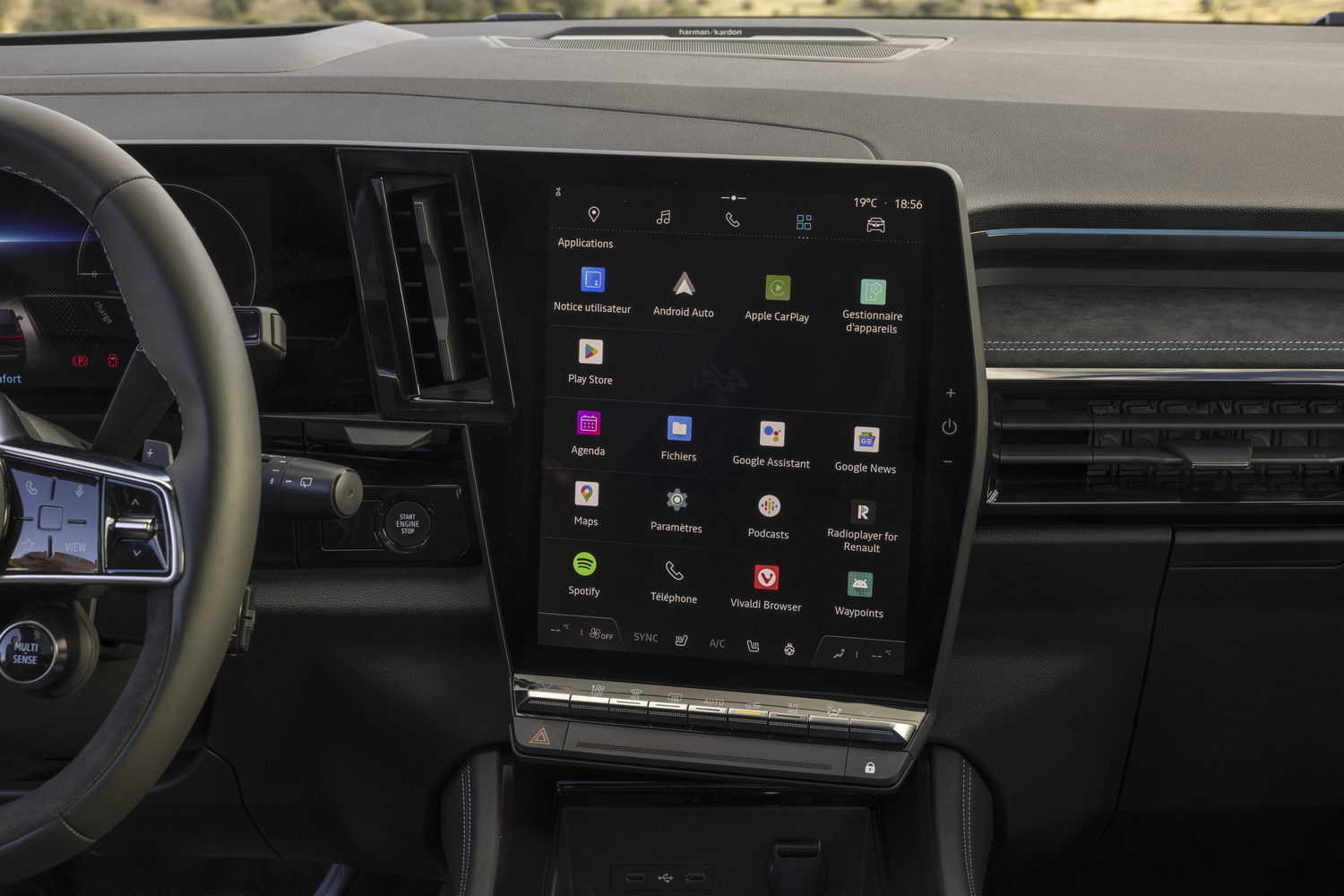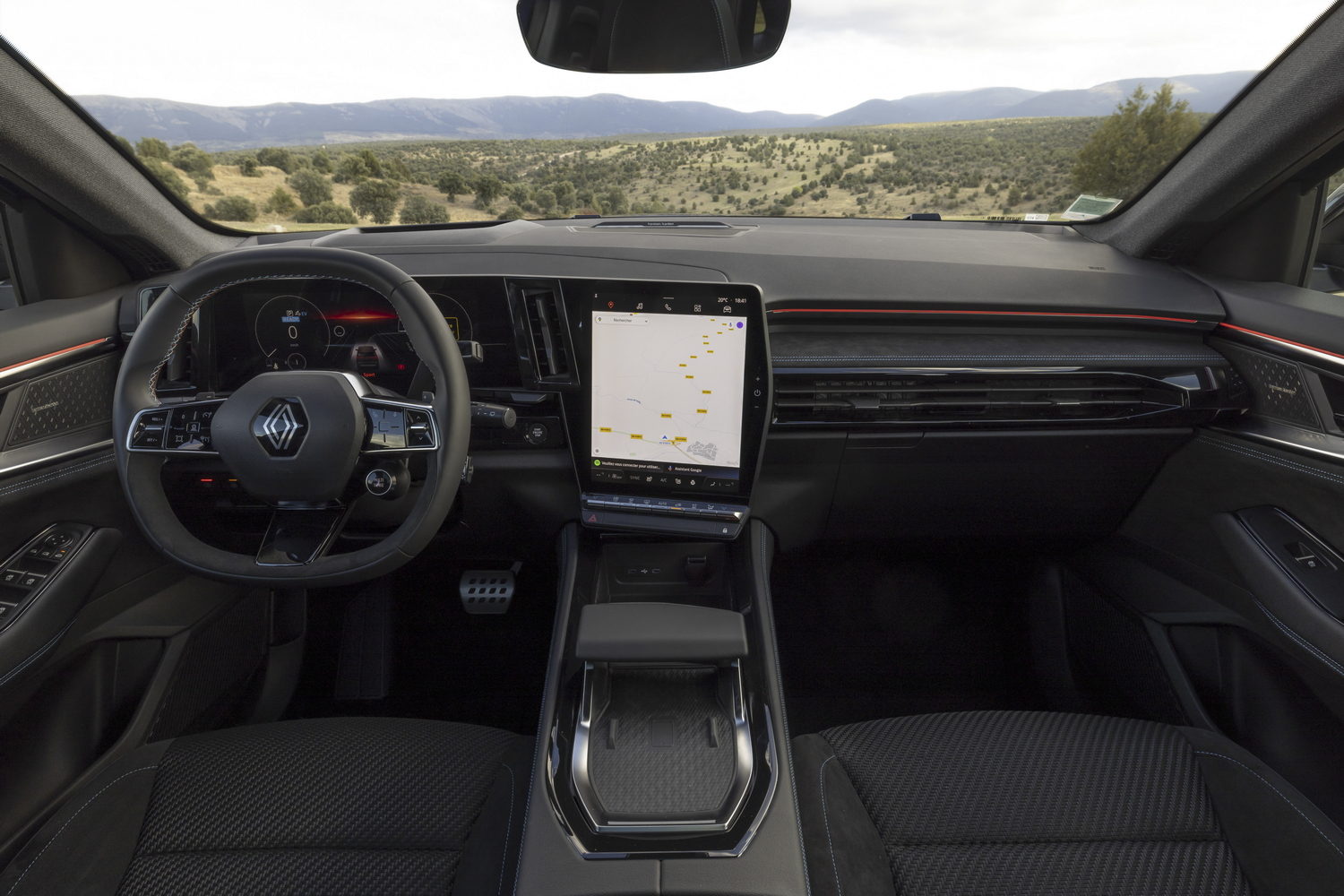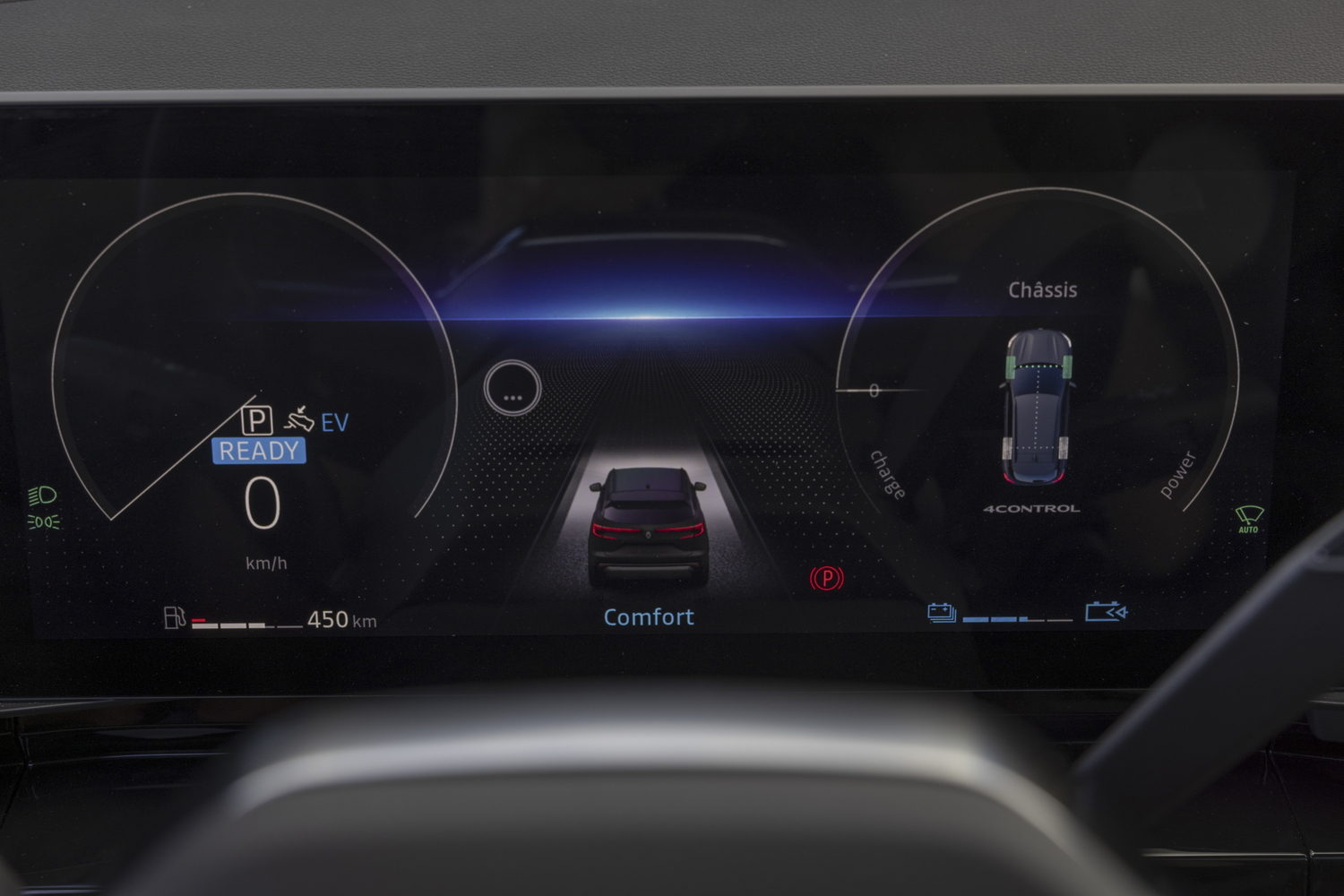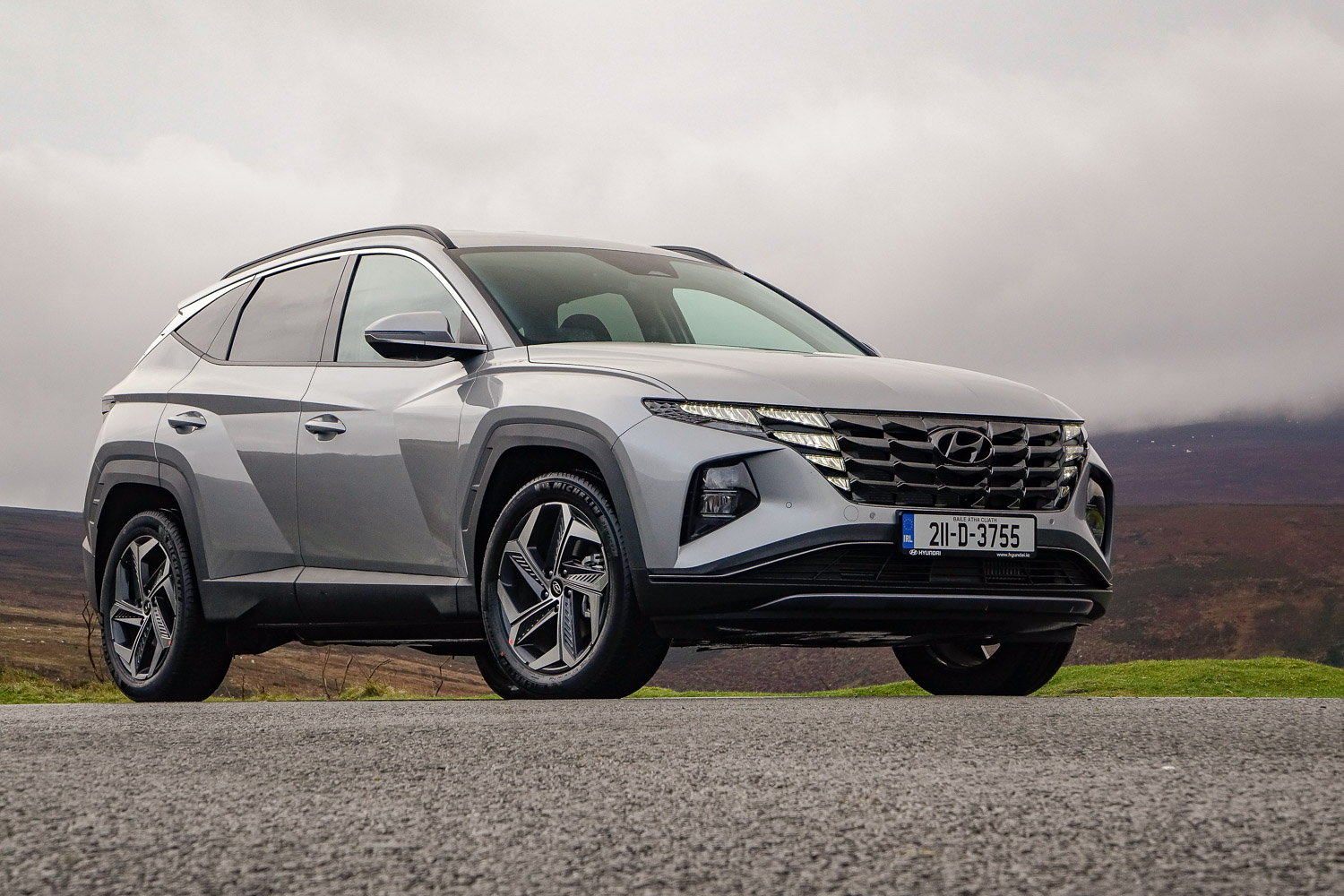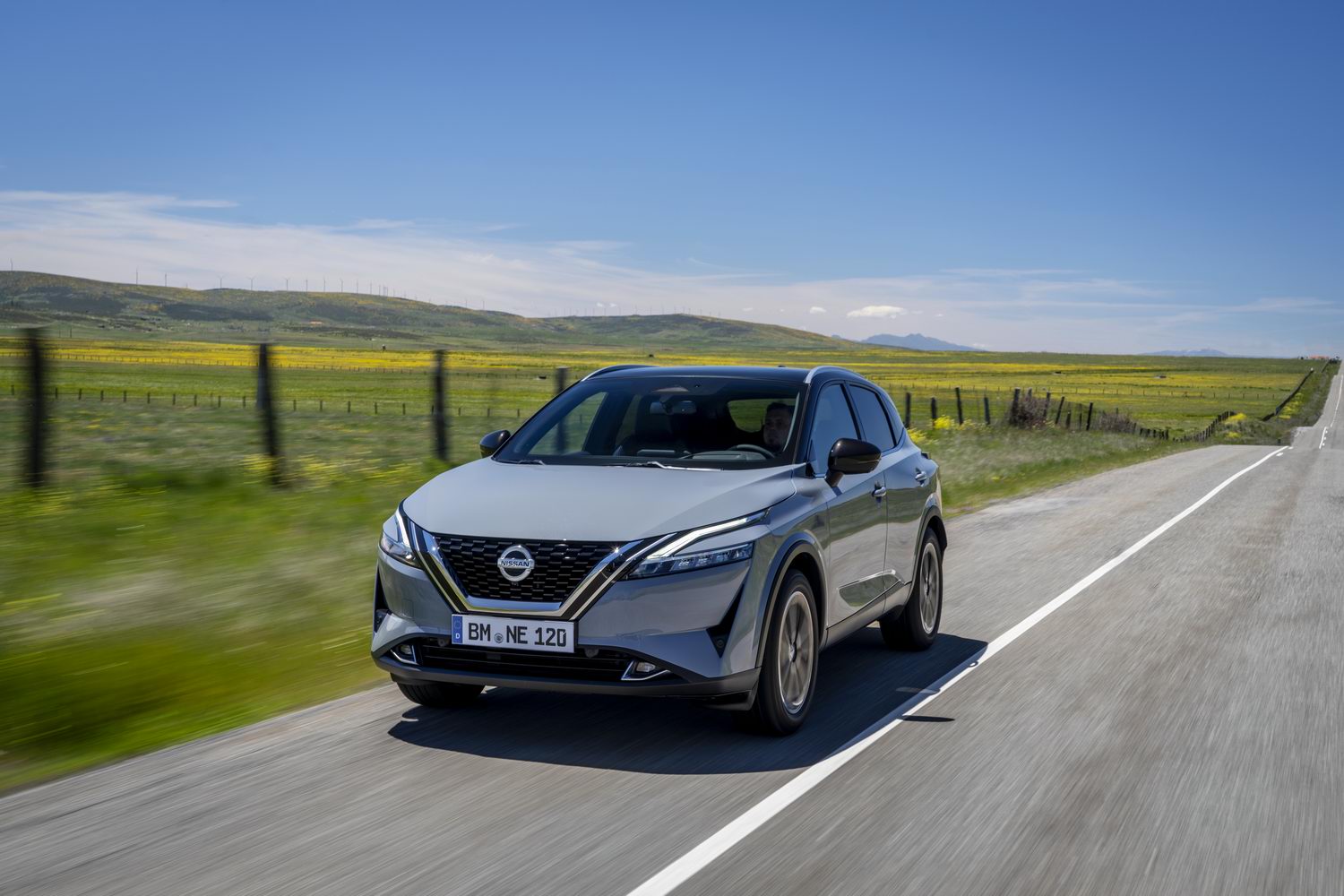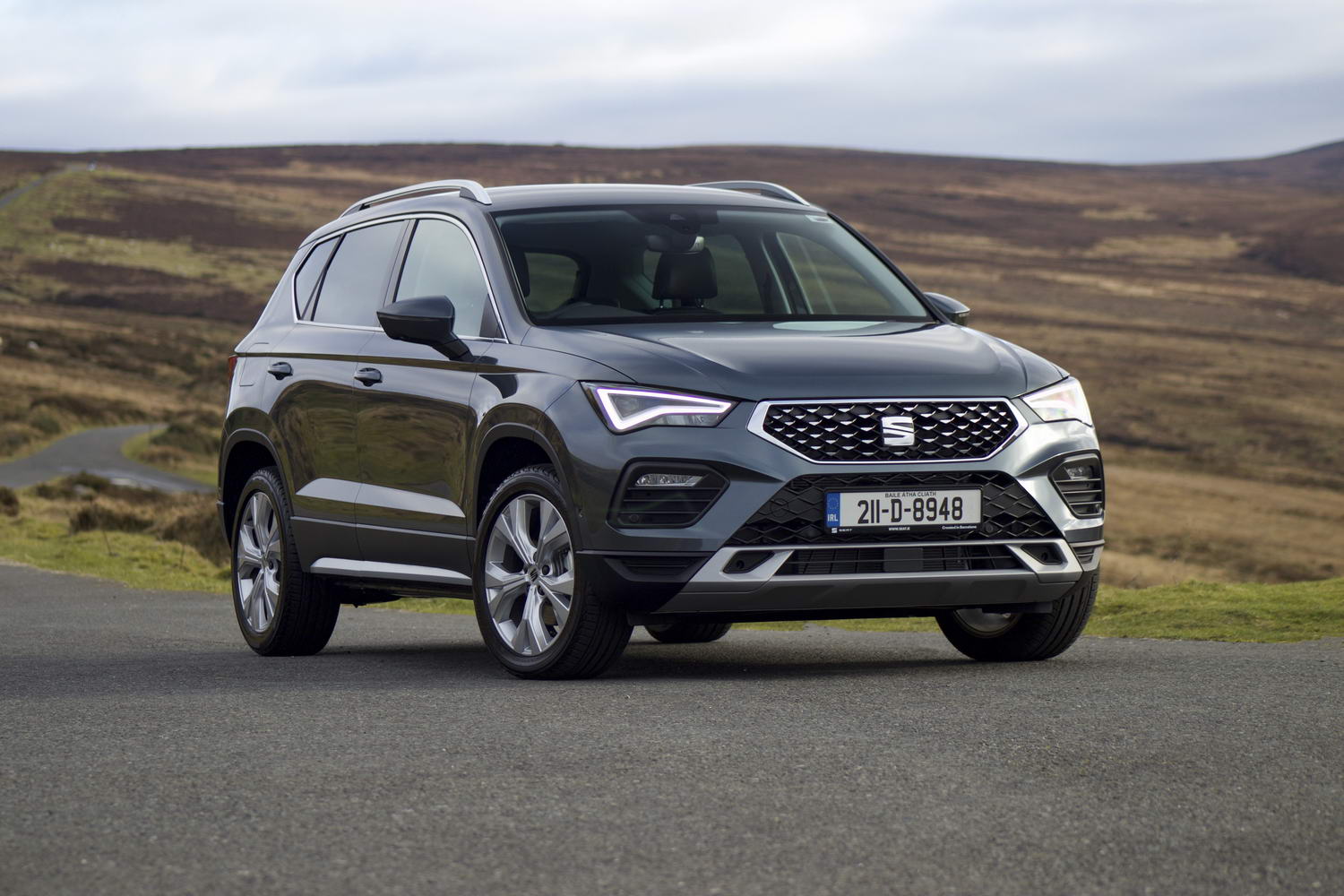Following on from the Qashqai-based Kadjar, Renault is having another stab at conquering the family SUV market. This new model is called the Austral and, while it's based on the same platform as the current-generation Qashqai, it shares far less with the Japanese crossover than its predecessor did. So does the French SUV have what it takes to beat the Qashqai at its own game, and challenge the sales sensation that is the Hyundai Tucson?
In the metal
Although the Austral sits on the same basic architecture as the Nissan Qashqai, it looks noticeably different. Obvious Renault design cues, including the C-shaped lights and massive logo on the nose, set it apart from the rest. It's handsome enough, but it doesn't feel radically different or distinctive - suggesting that Renault has played it a little safe in the styling department. Given the mass-market targeting, that's no bad thing.
Inside, however, it's a different story. As is the modern way, two massive screens form the centrepiece, with one huge portrait display in the middle and another landscape-oriented screen behind the steering wheel. The two systems work together, powered by Google's automotive technology that's already seeing service in the Megane E-Tech Electric, as well as several Volvo and Polestar products. That automatically makes the Austral's system one of the best in the business, with slick graphics, integrated internet technology and sharp responses to inputs.
The digital instrument display is, admittedly, less impressive than the touchscreen, thanks to some slightly odd graphics that presents information in places you wouldn't necessarily expect. Still, it'll be fine once you're used to it, and people who choose the sharp head-up display will spend far more time looking at that.
But the infotainment technology doesn't just stand alone. Renault has integrated the system into the design of the dashboard and centre console, with a distinctive sliding armrest in the centre console. The armrest has a phone holder and a key holder built in, while there's a big storage box underneath and cup holders in front. Slide the whole thing forward like the captain of a 747 advancing the throttle levers, however, and the cupholders are covered so the driver can brace their arm against the rest and use the touchscreen.
Despite the quality and integration of the infotainment system, Renault has resisted the urge to delegate everything to the screen. The climate control system, for example, uses physical switchgear below the display, while there are still plenty of switches on the steering wheel and dashboard. Most of those switches feel solid enough, and that's true of the general cabin quality inside the Austral, too. Some of the plastics are a bit hard and tough, but there's plenty of forgiving material in there and it's all well bolted together. It won't give Audi sleepless nights, but it can compete with the likes of Ford and Peugeot for sure.
Space is very competitive, too. The back seats slide fore and aft, allowing owners to choose between rear legroom and boot space, depending on their needs. Put the seats all the way forward and rear passengers will still fit in, but legroom will be limited. You will, however, free up more than 550 litres of luggage space, and that's considerably more than you can get in a BMW 3 Series Touring estate. Move the seats back and legroom becomes decidedly generous, but the boot shrinks to 430 litres - less than you'll find in the back of a Volkswagen T-Roc, for example.
Driving it
This new 1.2-litre E-Tech hybrid powertrain is the only option that's coming to Ireland for the time being, so thankfully it's one of the best in the business. Although it's a conventional hybrid system with a small 2kWh battery that cannot be plugged in to an external source, it uses the electric motors more regularly than you might expect, allowing it to burn just 4.6-5.0 litres of unleaded every 100km on the official WLTP economy test. According to Renault, it can run on electricity alone up to 80 per cent of the time in a city centre.
Not that you'll be able to tell which motor is in action most of the time. The little three-cylinder engine is impressively refined, and the system switches between petrol and battery power almost seamlessly. Put your foot down hard or for a sustained period and the engine will roar a bit, but it's quieter than most hybrids and it's even better than the 1.6-litre E-Tech systems in the Renault Captur and Arkana SUVs.
Performance is more than adequate, too, with the system providing sufficient punch to keep up with traffic, although overtaking performance is a little underwhelming considering the nominal 199hp power output. That's partly down to the complicated transmission, which offers a total of 15 different modes of (fully automatic) operation. That's a lot of choice, and the system appears to get a bit indecisive when you demand some power. If you're just cruising along, though, it's more than potent enough.
But while the powertrain might pass muster, it doesn't make the Austral a particularly refined car. Yes, the engine is hushed, but a lot of road noise seeps into the cabin. Naturally, the hiss from the tyres is at its worst on motorways, but it's still audible when you're crawling around town.
Nor is the Austral especially comfortable. Admittedly, our test car came with massive 20-inch alloy wheels, but it also included the new multi-link rear suspension, which comes as standard with the optional four-wheel steering system. Standard two-wheel-steering versions get a less sophisticated torsion beam set-up. Despite that, and the relatively smooth European asphalt of our test route, the Austral managed to make a meal of minor imperfections in the surface, thudding and thumping its way along. Things did improve at higher speeds, but the low-speed ride felt lumpen and heavy.
That said, the 4 Control four-wheel-steering system does give the Austral very impressive agility. By turning the rear wheels in the opposite direction to those at the front when cornering at low speeds, the turning circle is comparable with that of smaller cars such as the Clio. Meanwhile, turning the wheels in the same direction as those at the front gives the Austral more stability at high speed. The crossover point changes depending on which of the driving modes is engaged, with the Sport mode designed more for agility than stability, for example.
But even in Eco mode, the Austral can feel quite eager. The steering elicits surprisingly large responses quite rapidly, so smooth inputs are necessary, rather than a luxury. The upside of that is keen cornering, ably assisted by the plentiful grip from the Michelin tyres and the modicum of feel offered by the steering wheel. The result is a car that's more fun to drive than most of its rivals, even if it takes a little getting used to. How cars without the 4 Control system will feel, however, remains to be seen.
While Renault may be offering the Austral with four-wheel steering, it hasn't given the family SUV all-wheel drive. Apparently, that's a multi-faceted decision and not just a cost-cutting exercise, so the Renault bigwigs have not ruled out such an addition to the range in the future. For now, then, the Austral has limited off-road capability, but it does have useful ground clearance and a 1,500kg maximum braked towing weight, which might come in handy for some.
What you get for your money
Renault Ireland hasn't yet announced prices and specifications for the new Austral, but we will update this section when we hear more. What we do know, however, is that this new car will be available in a choice of three trims: Techno, Esprit Alpine and Esprit Alpine Plus. The Esprit Alpine Plus trim level we tried will be offered as a sporty-looking option, decked out with tricolour stitching, Esprit Alpine badges and bespoke, Alpine-branded wheels. Although the Austral is the first model in Renault's range to get the new trims, they are set to arrive across the French brand's line-up, replacing the existing R.S. Line models.
Summary
The Renault Austral offers customers a solid hybrid powertrain and smart styling, as well as a spacious cabin and surprisingly lively handling. First impressions suggest that it isn't notably better than its key rivals, but it has ample talent, making it a worthy rival. Irish pricing will be key to its success.

